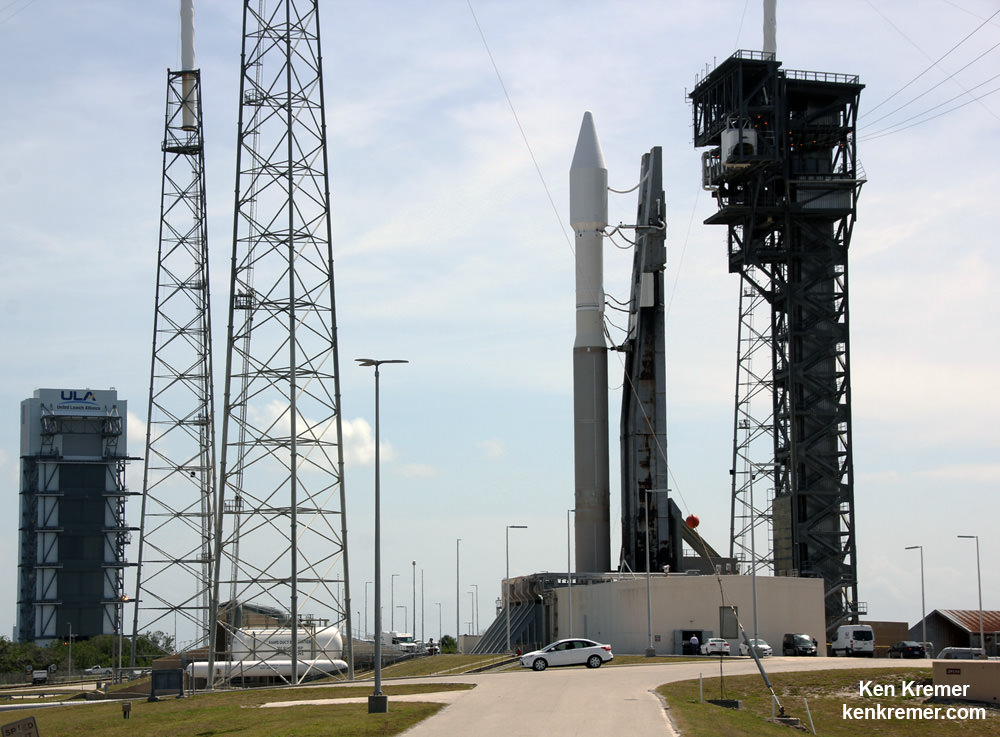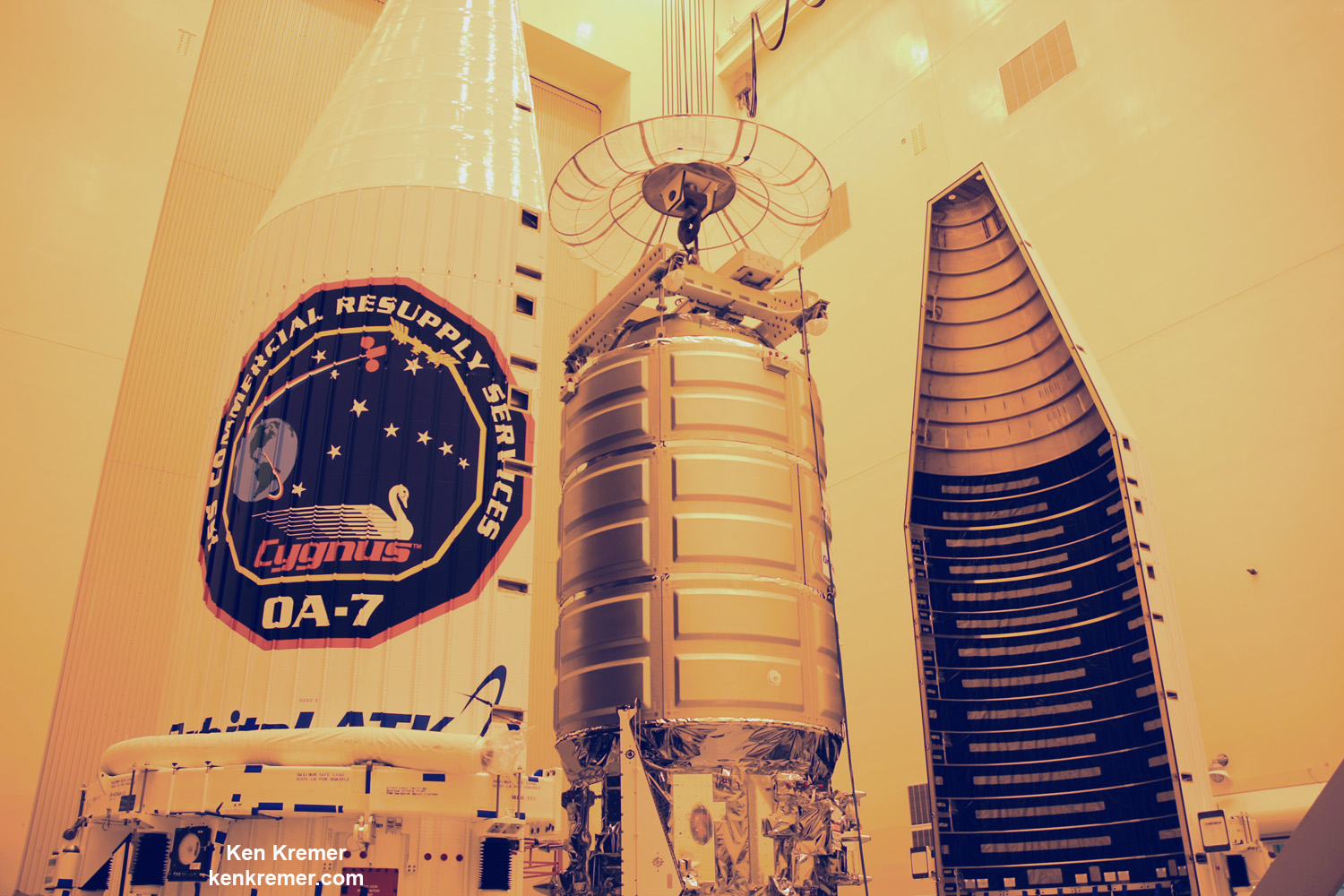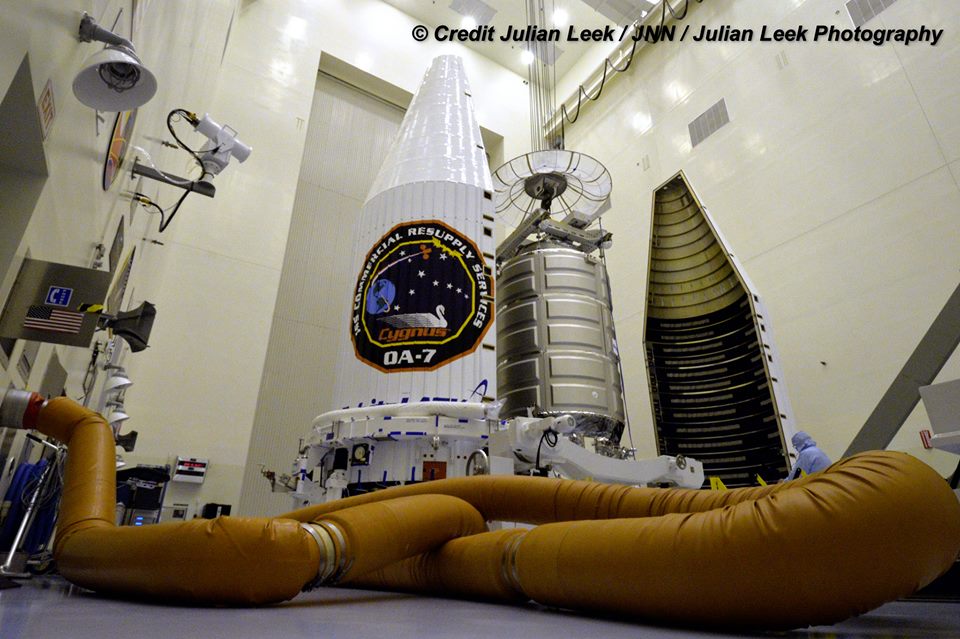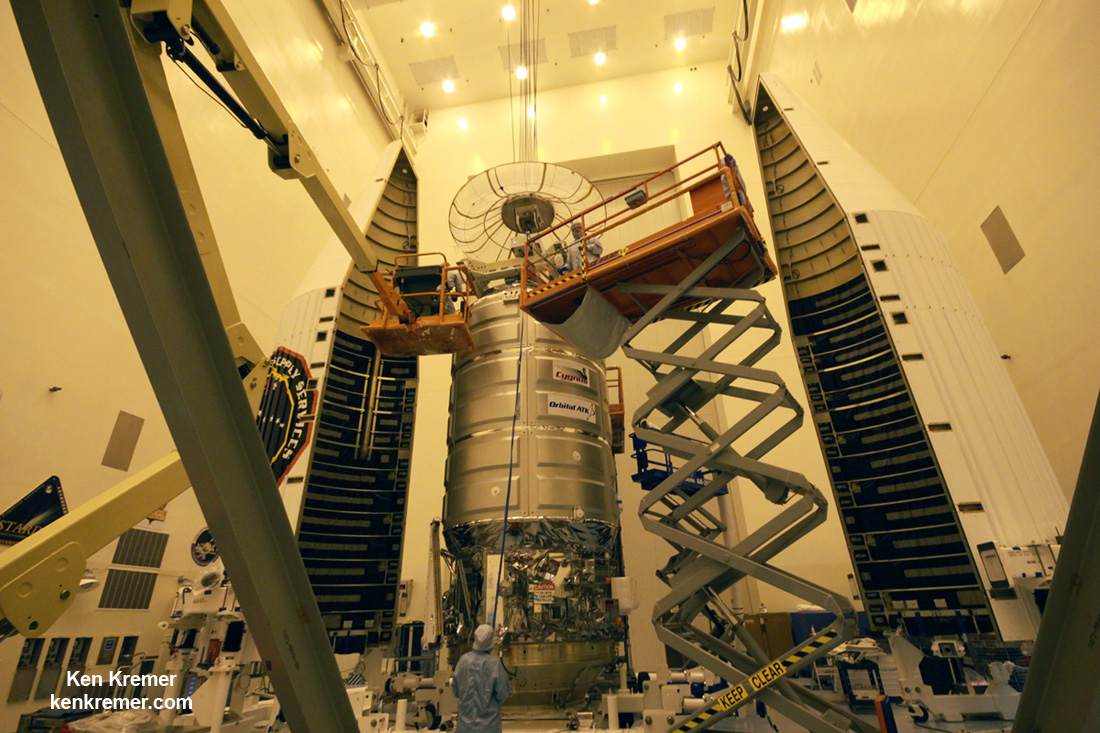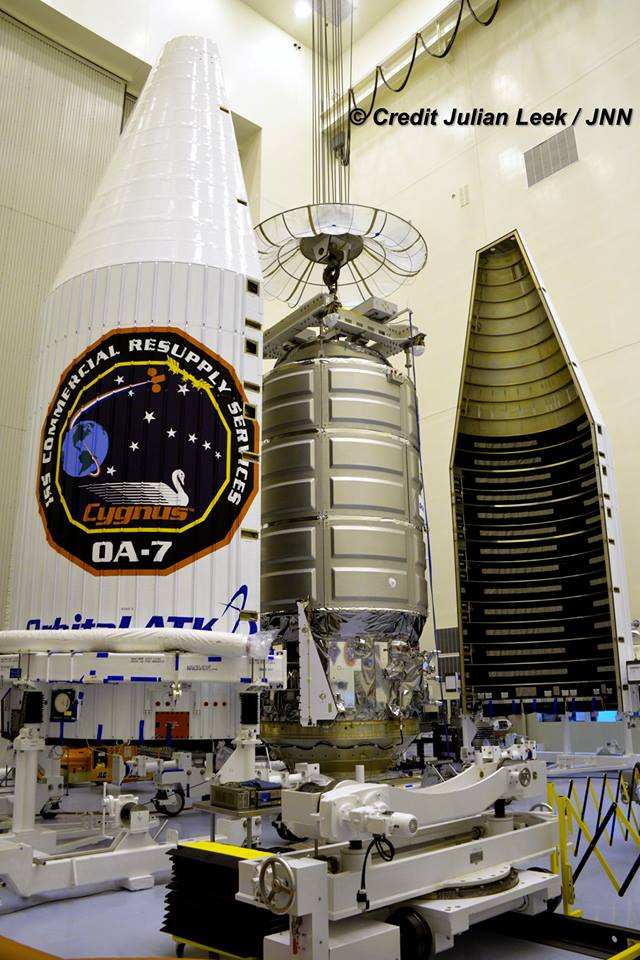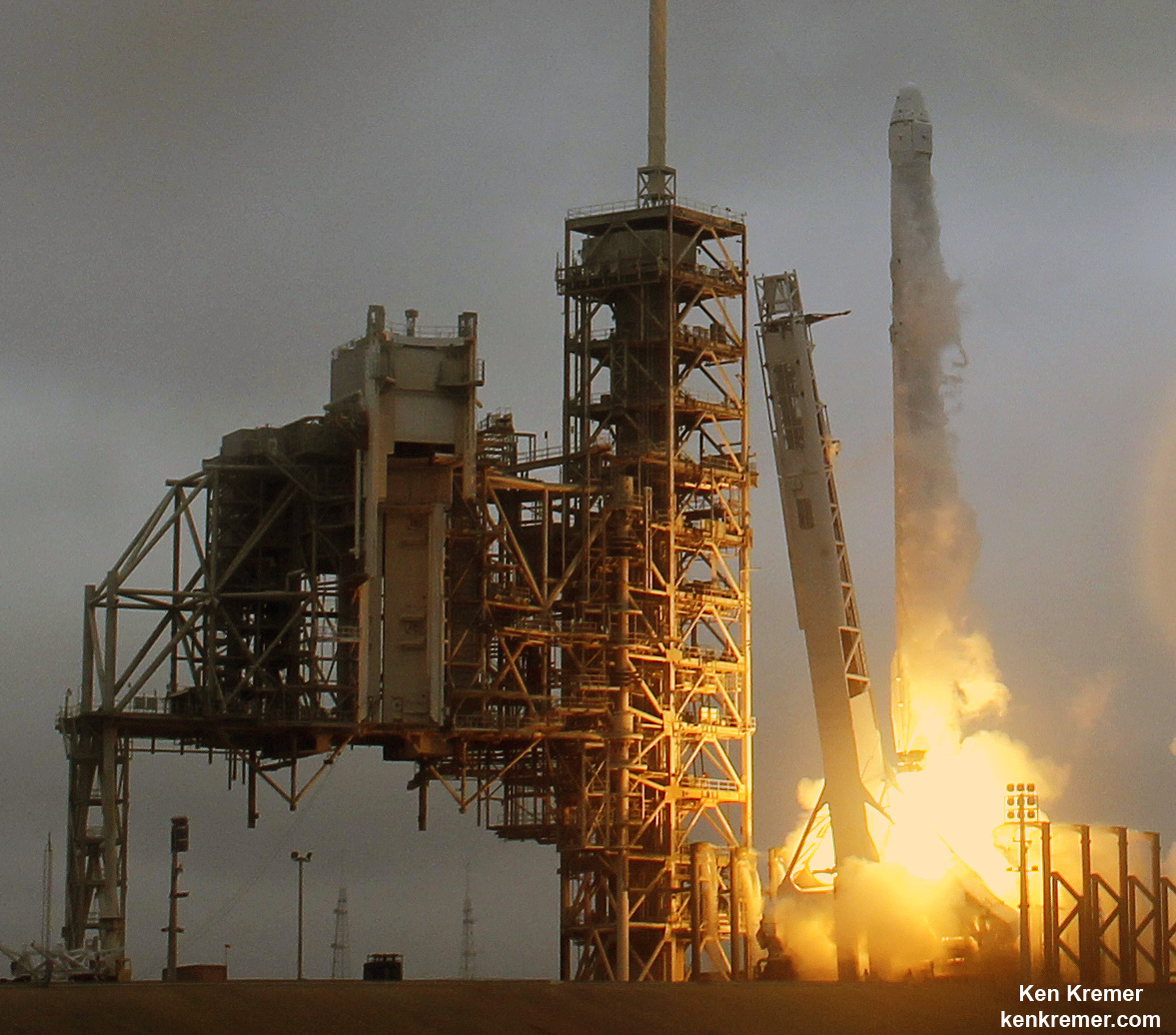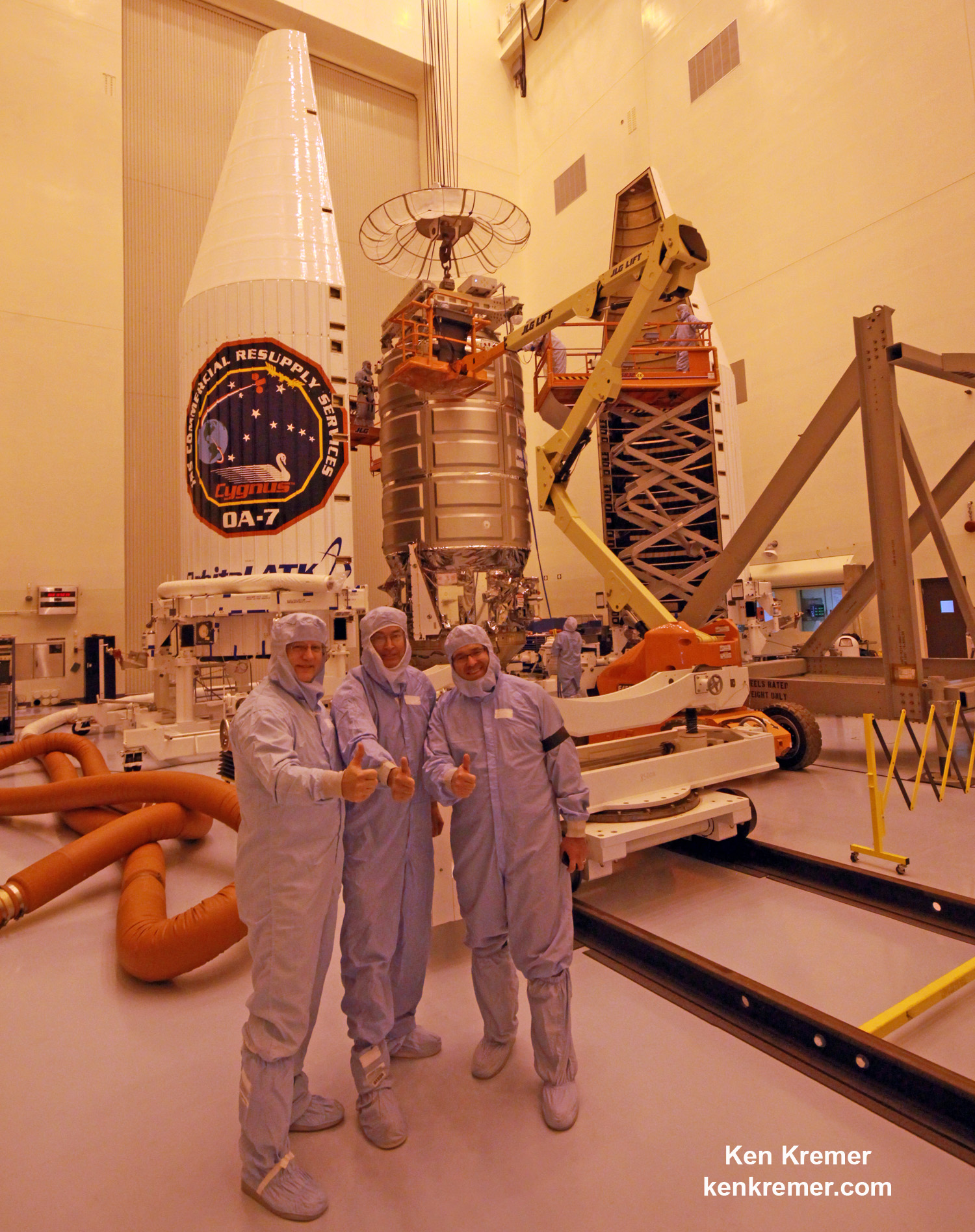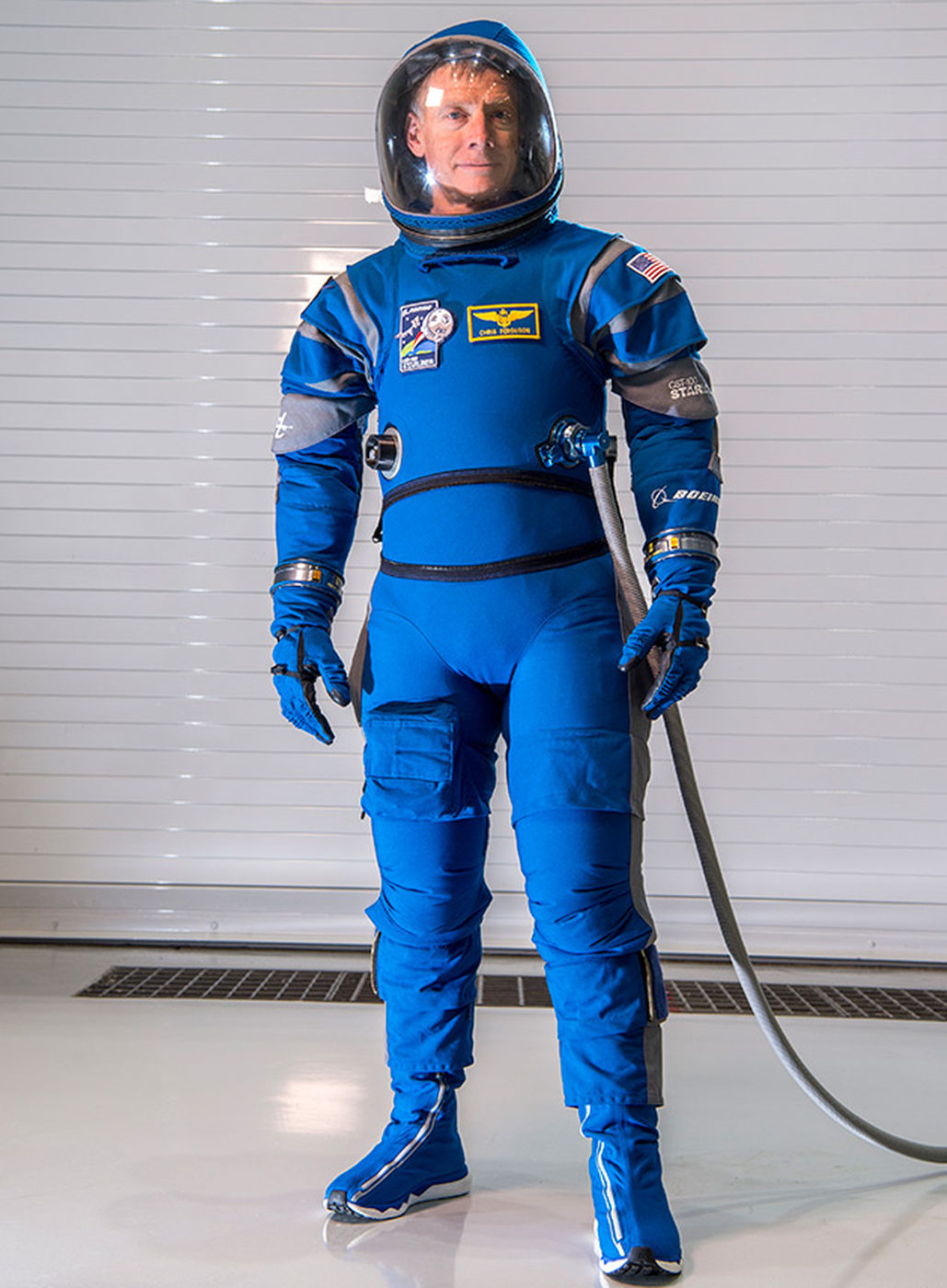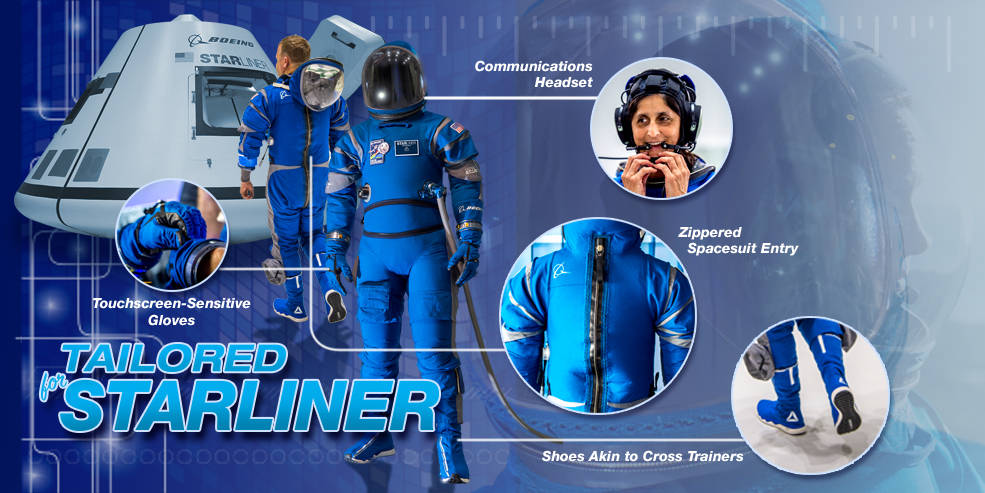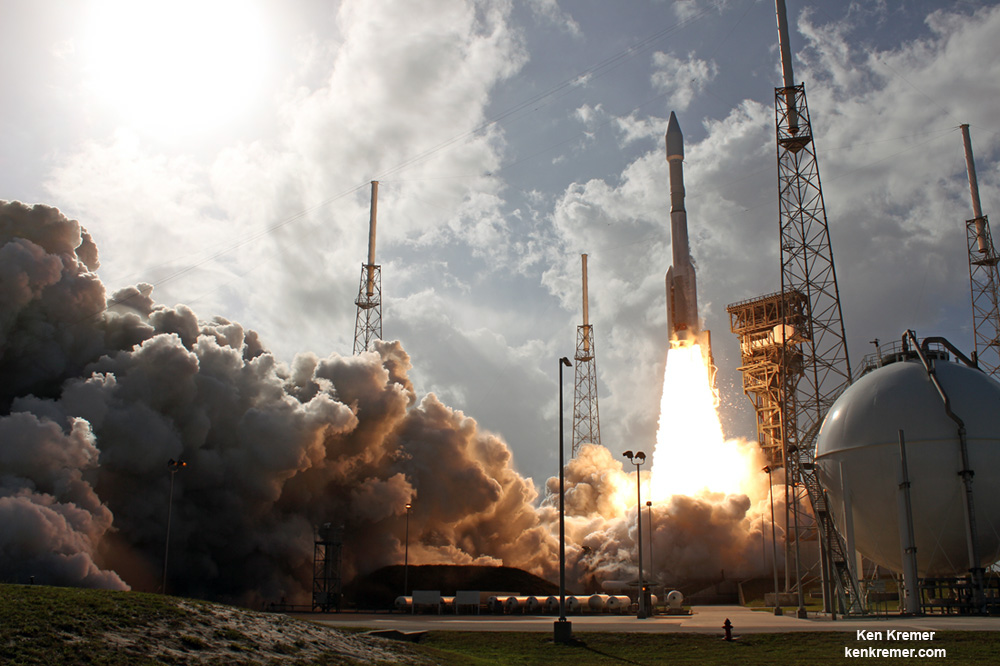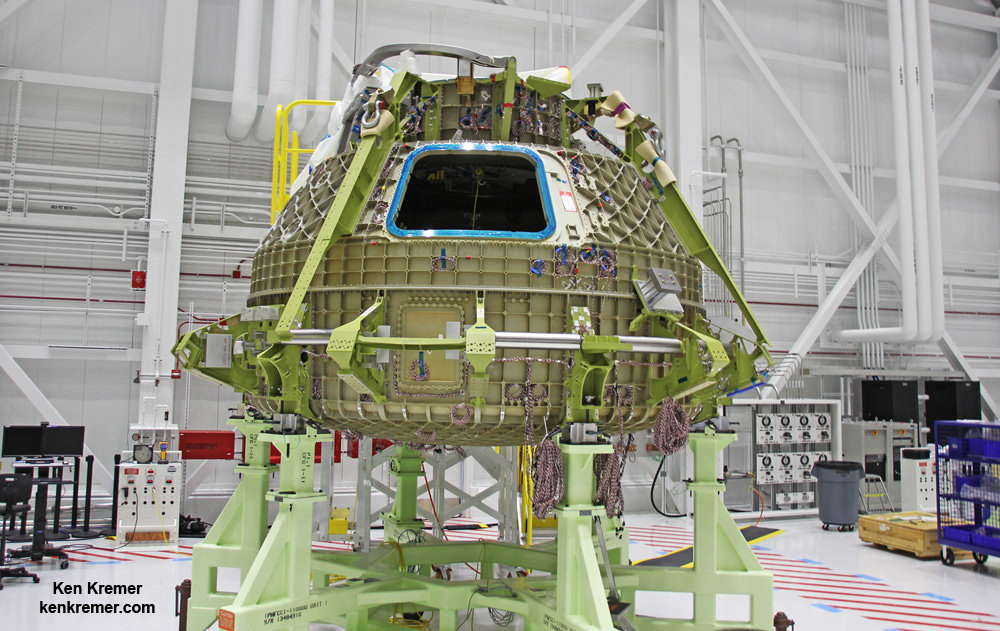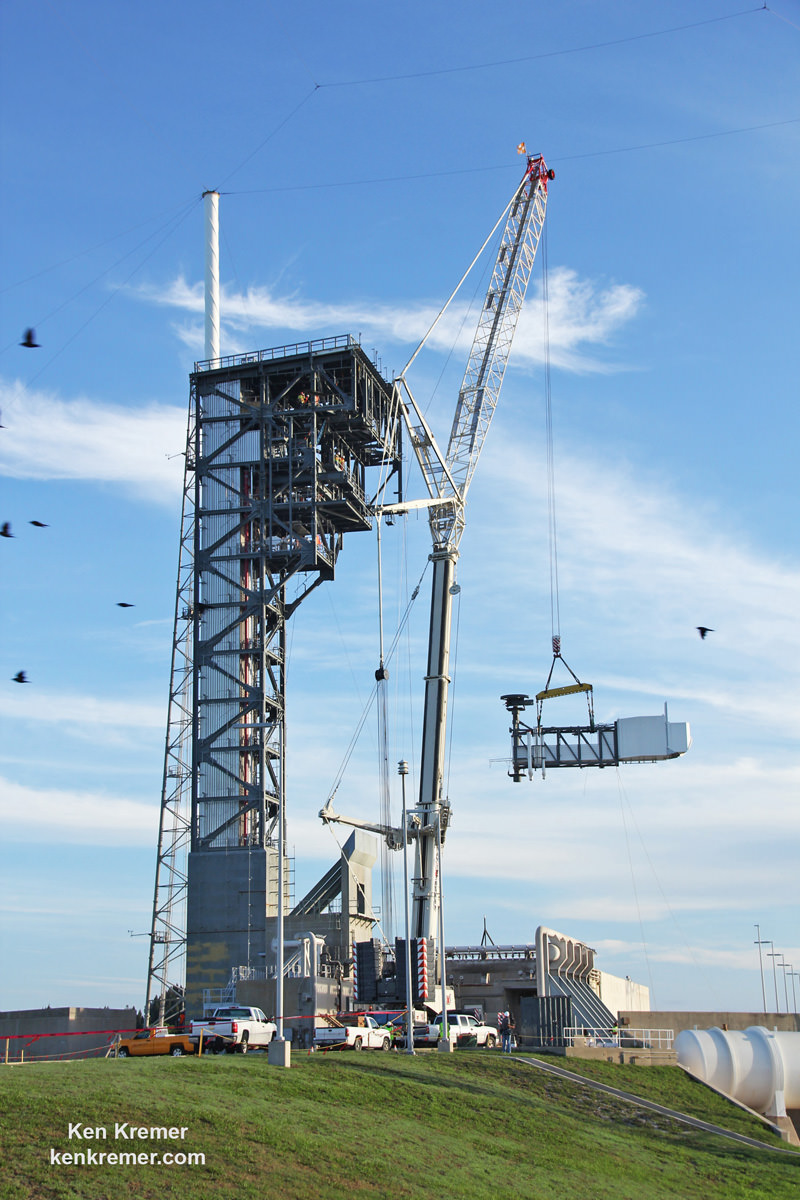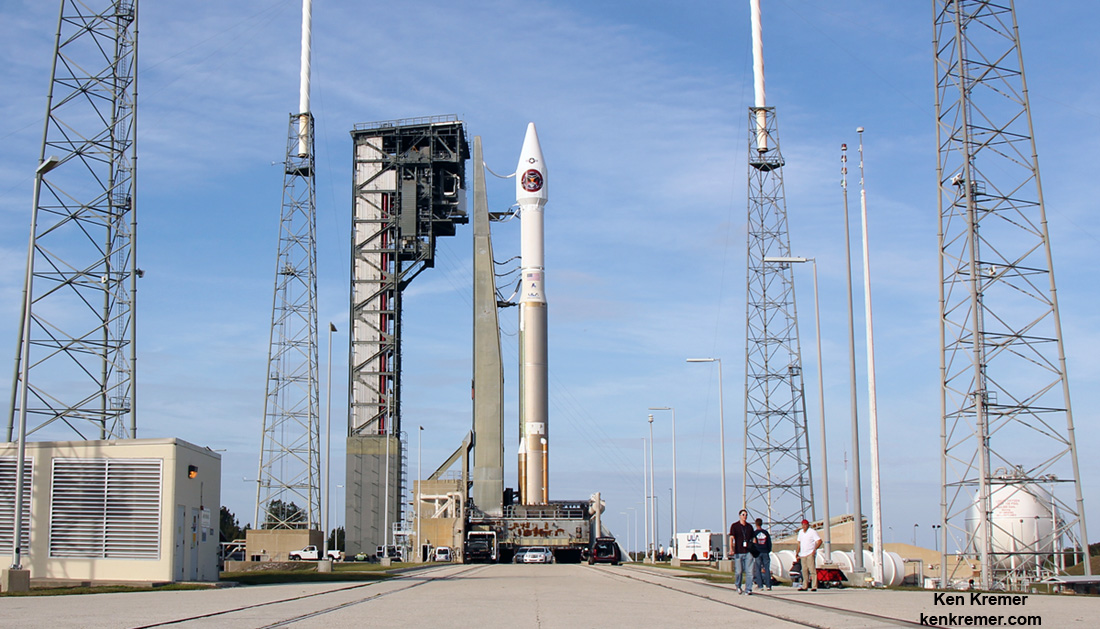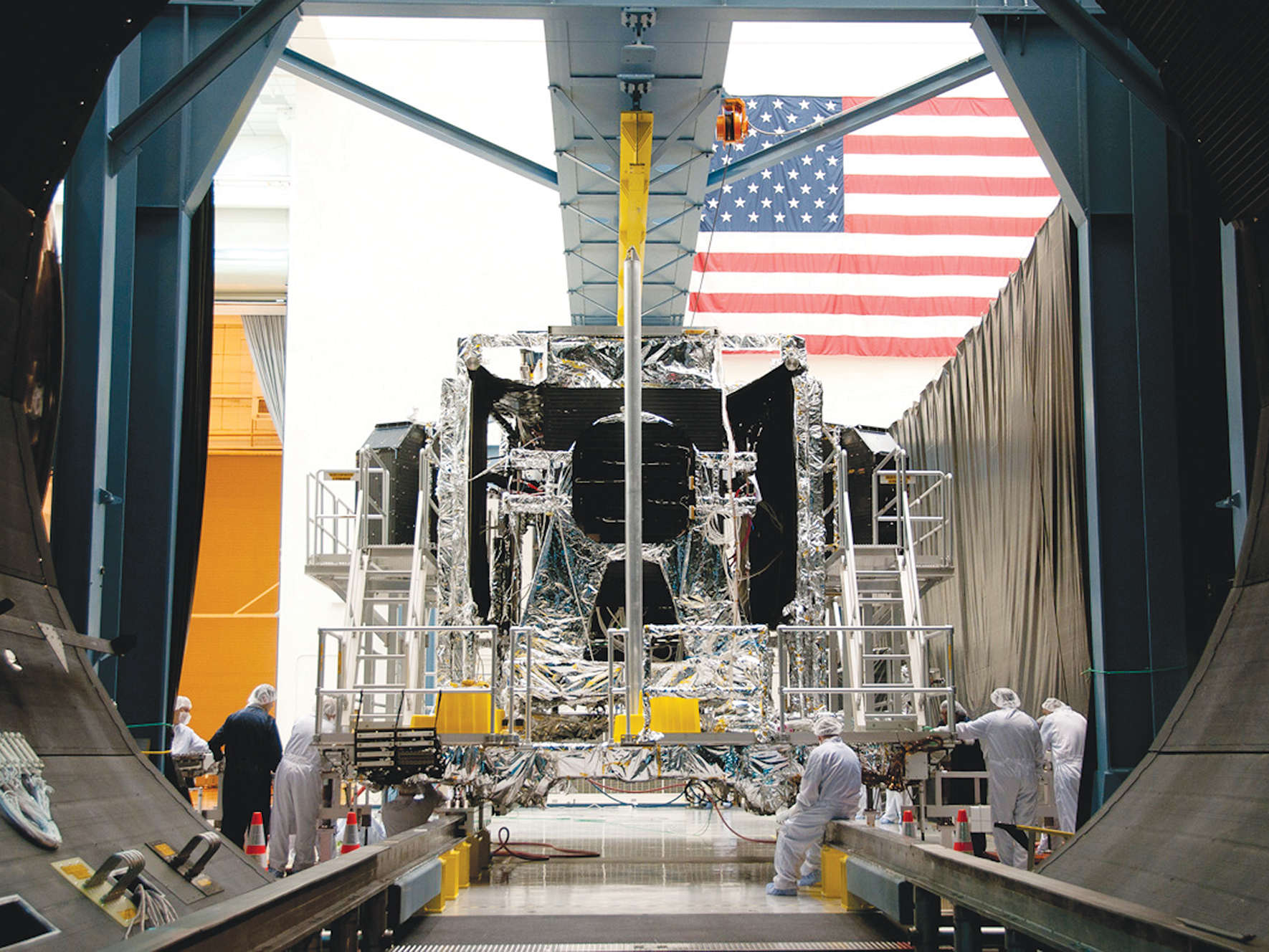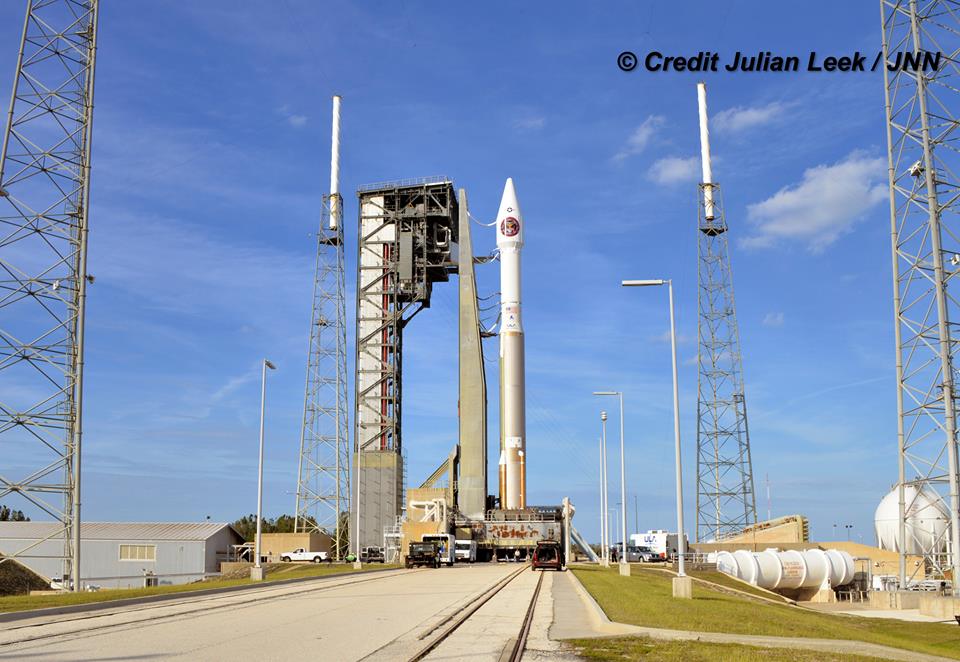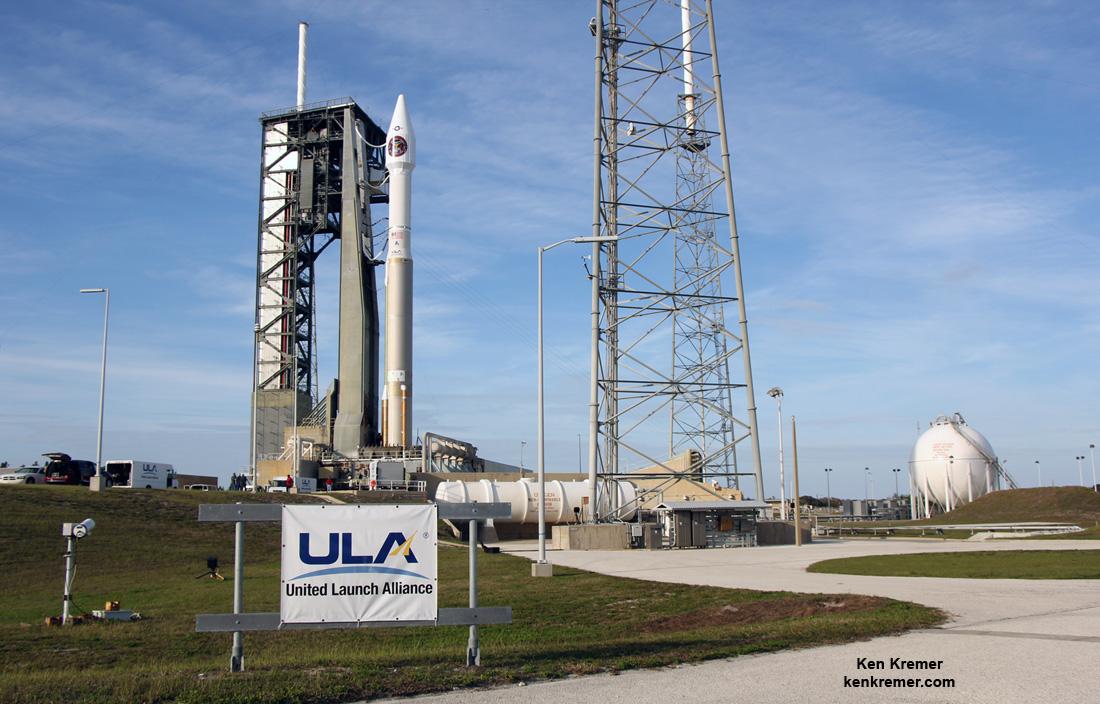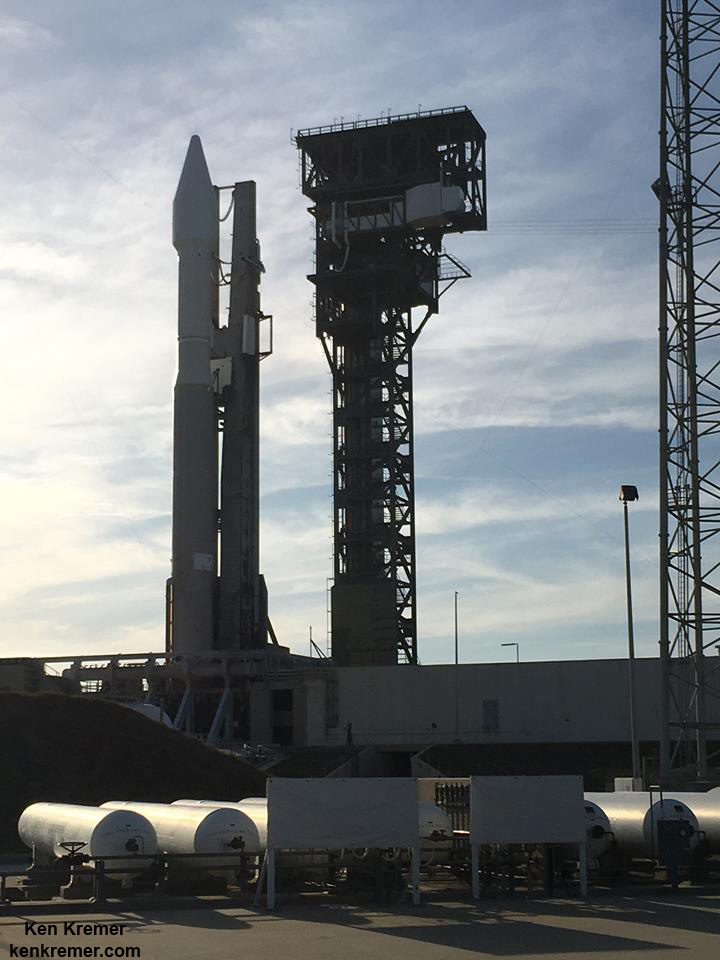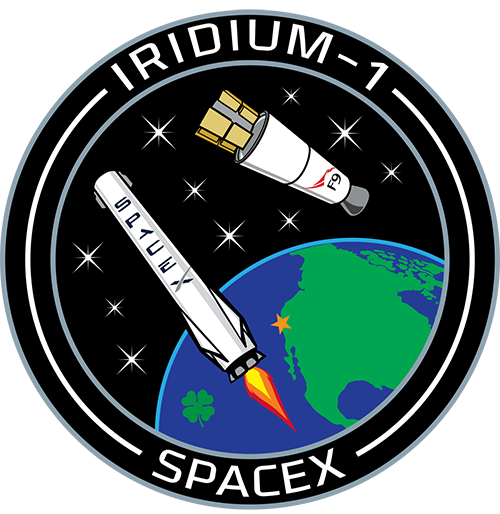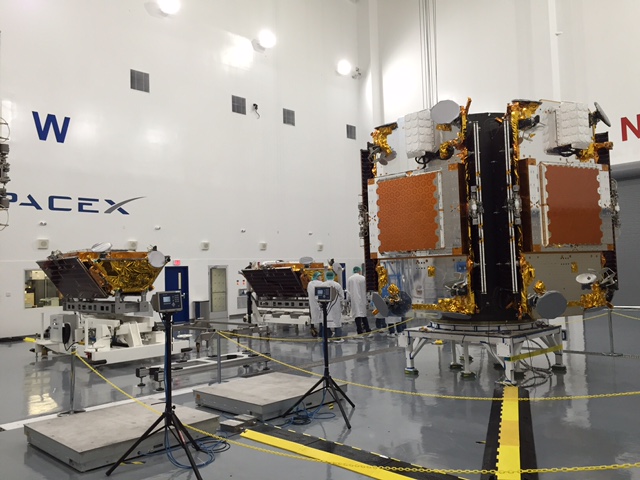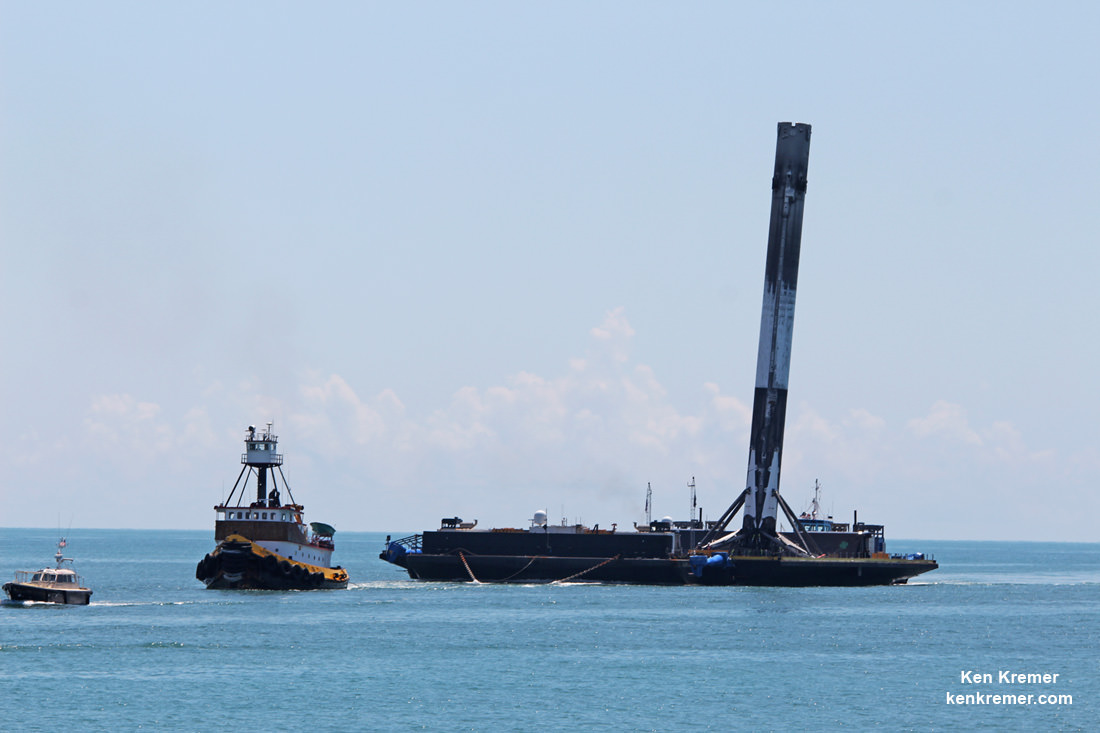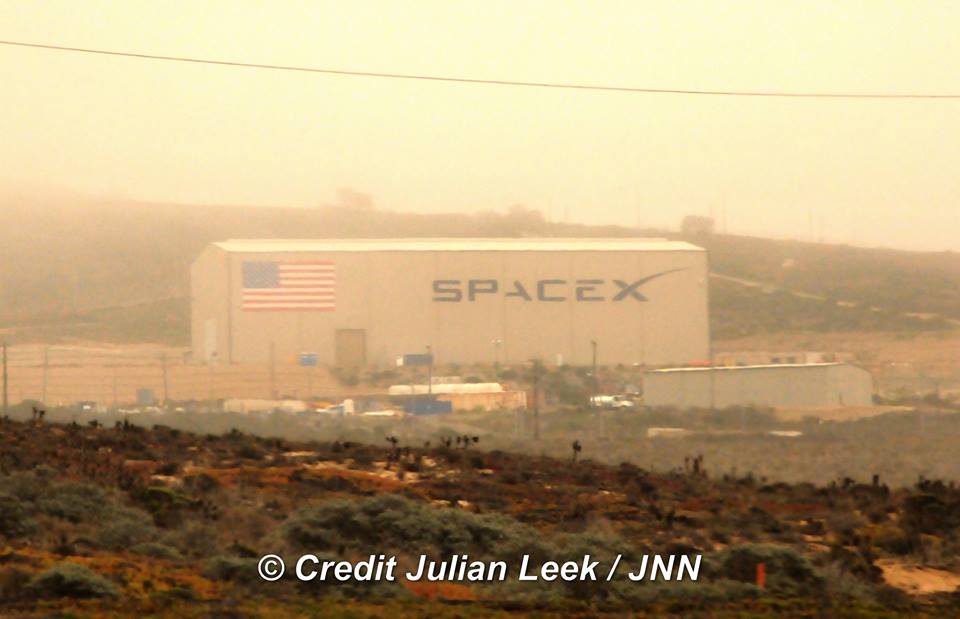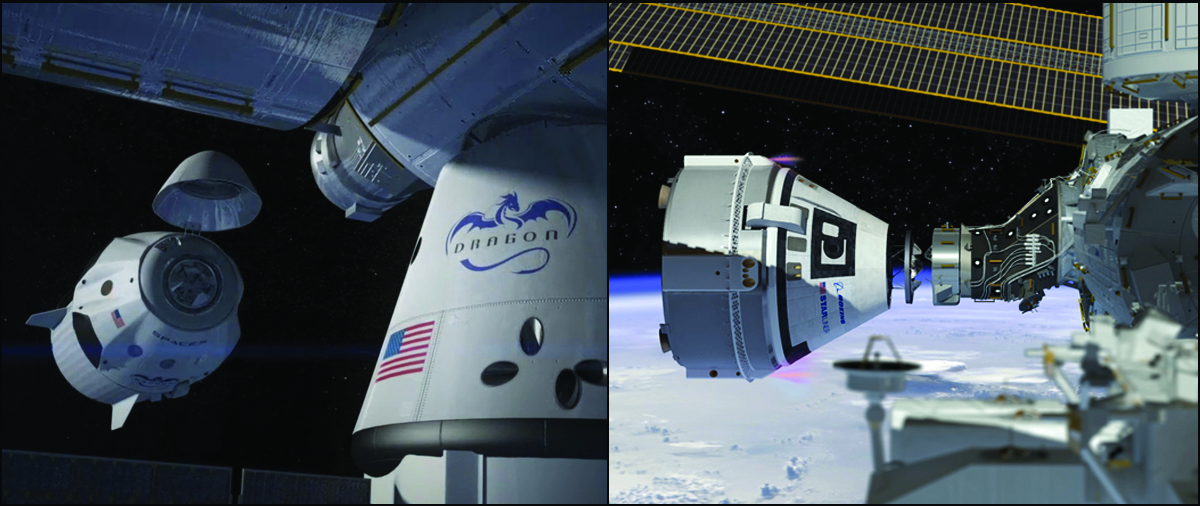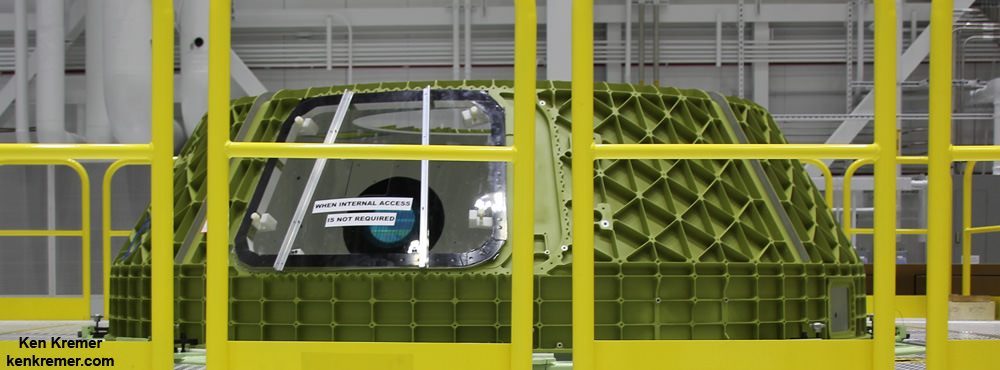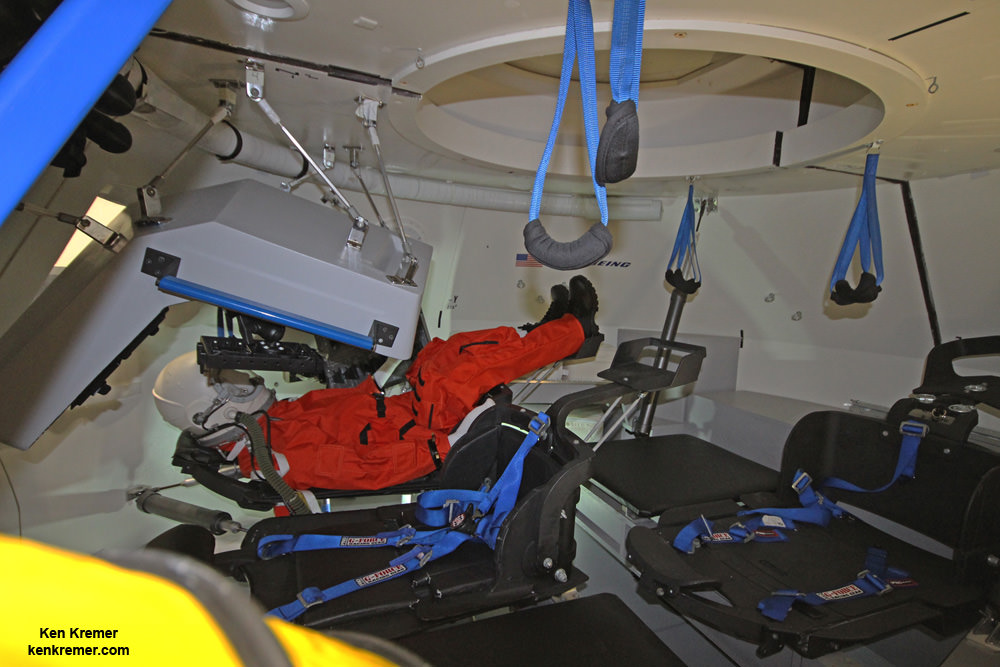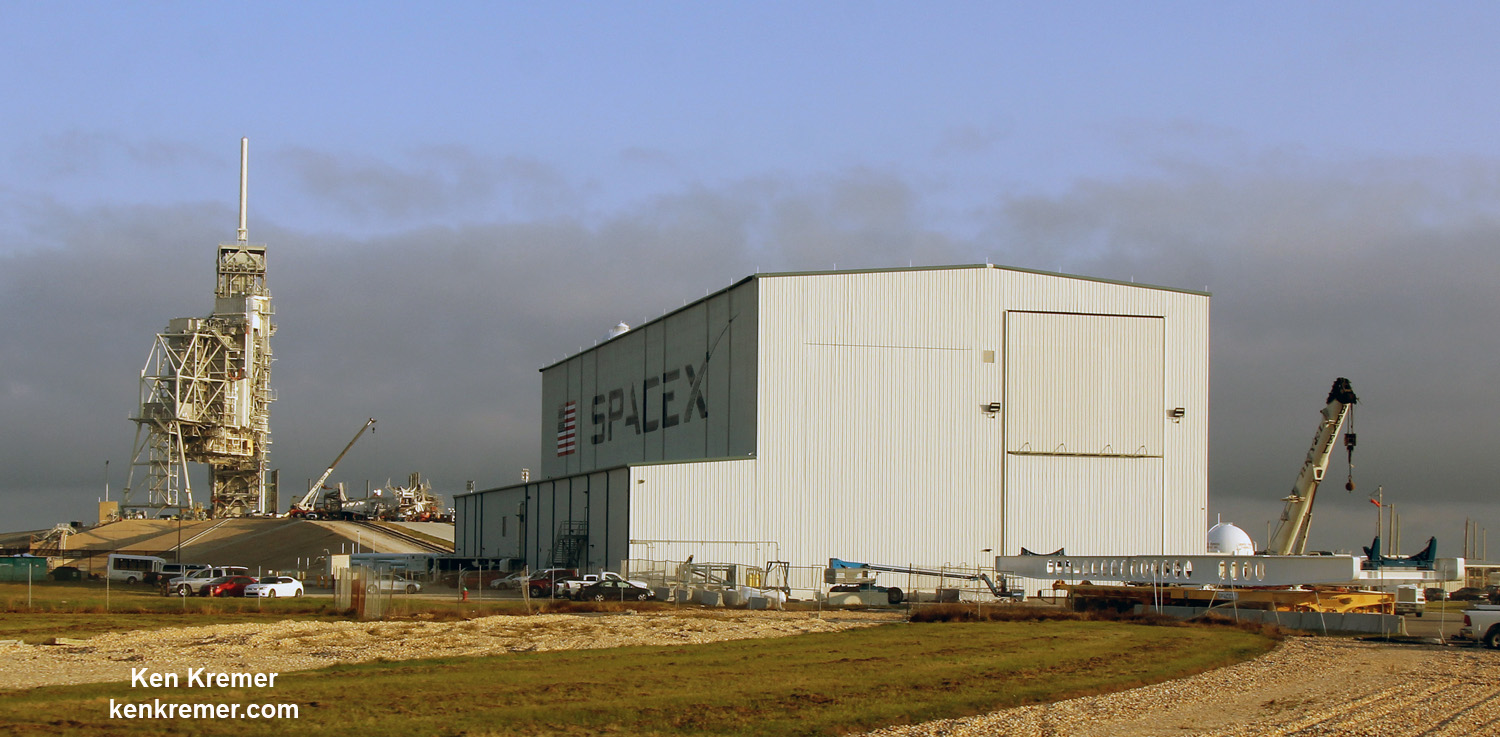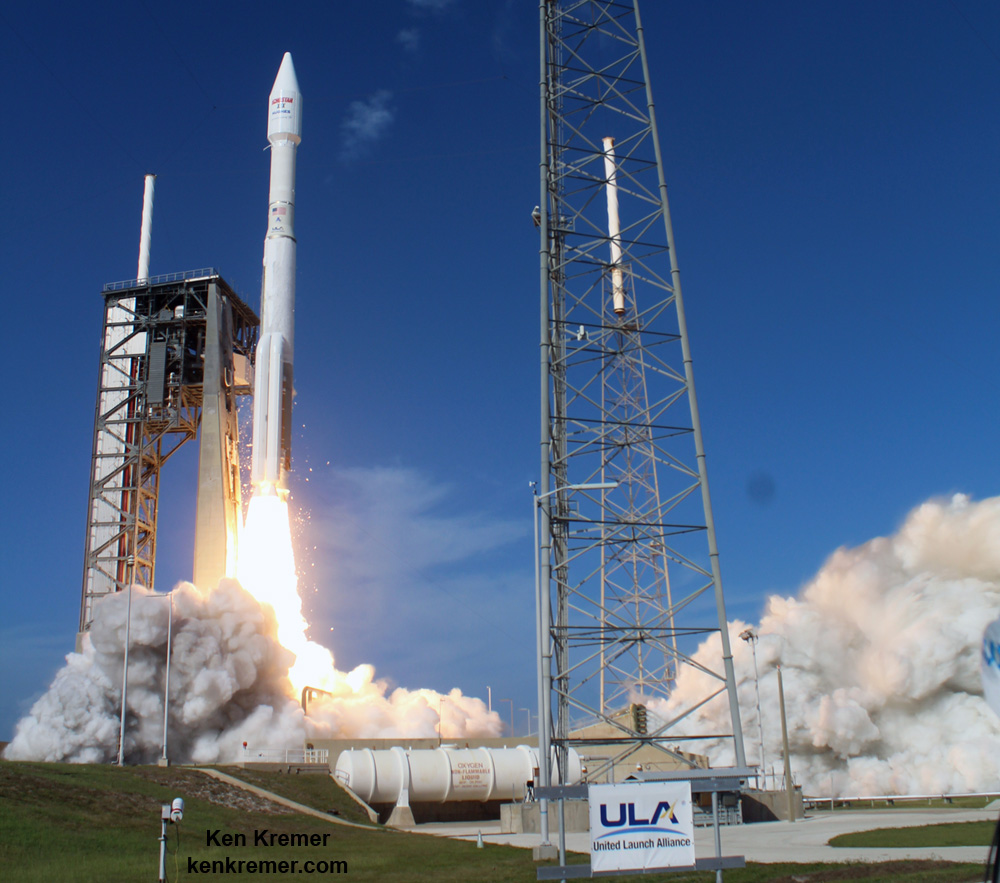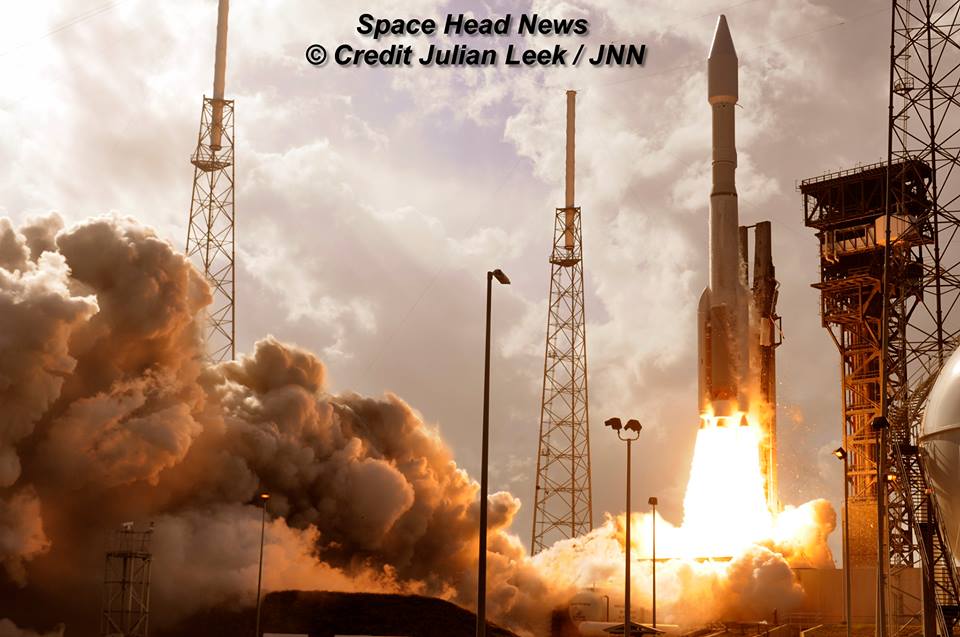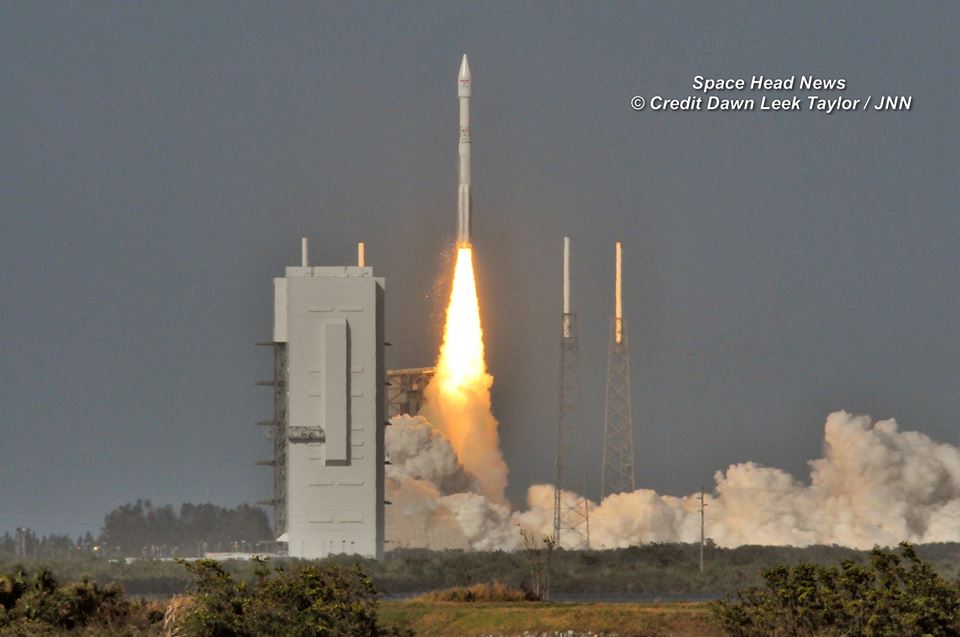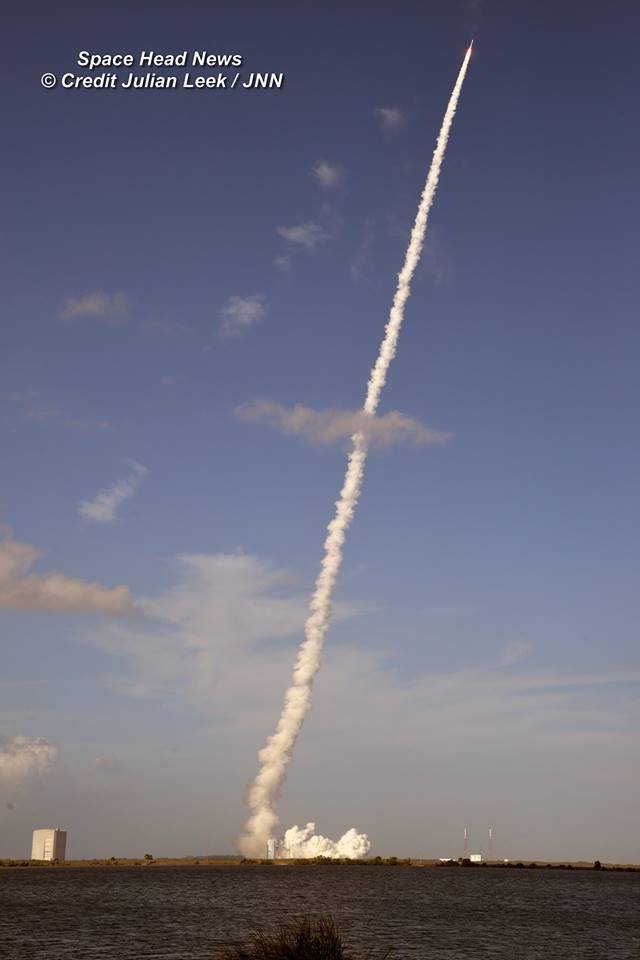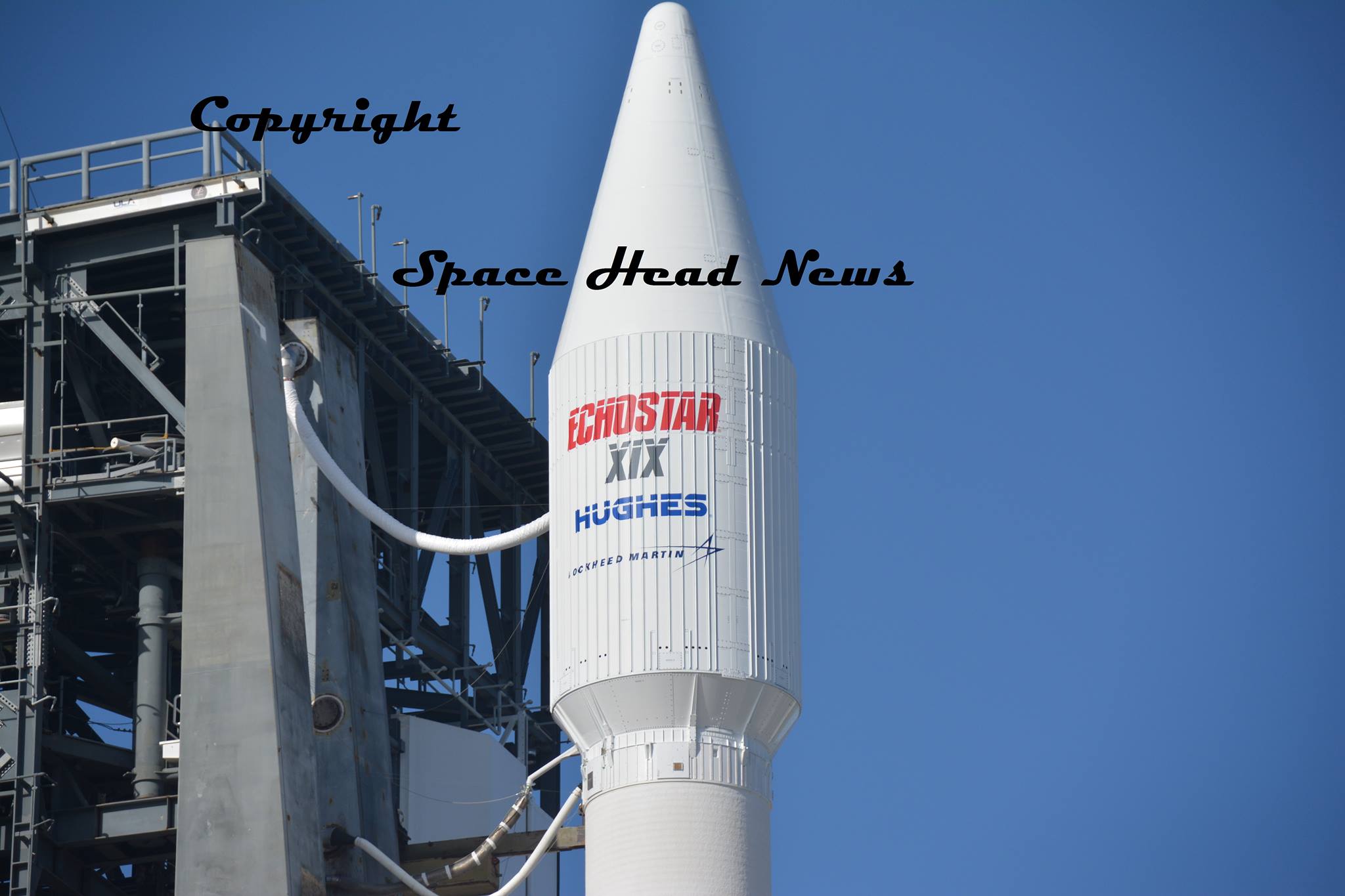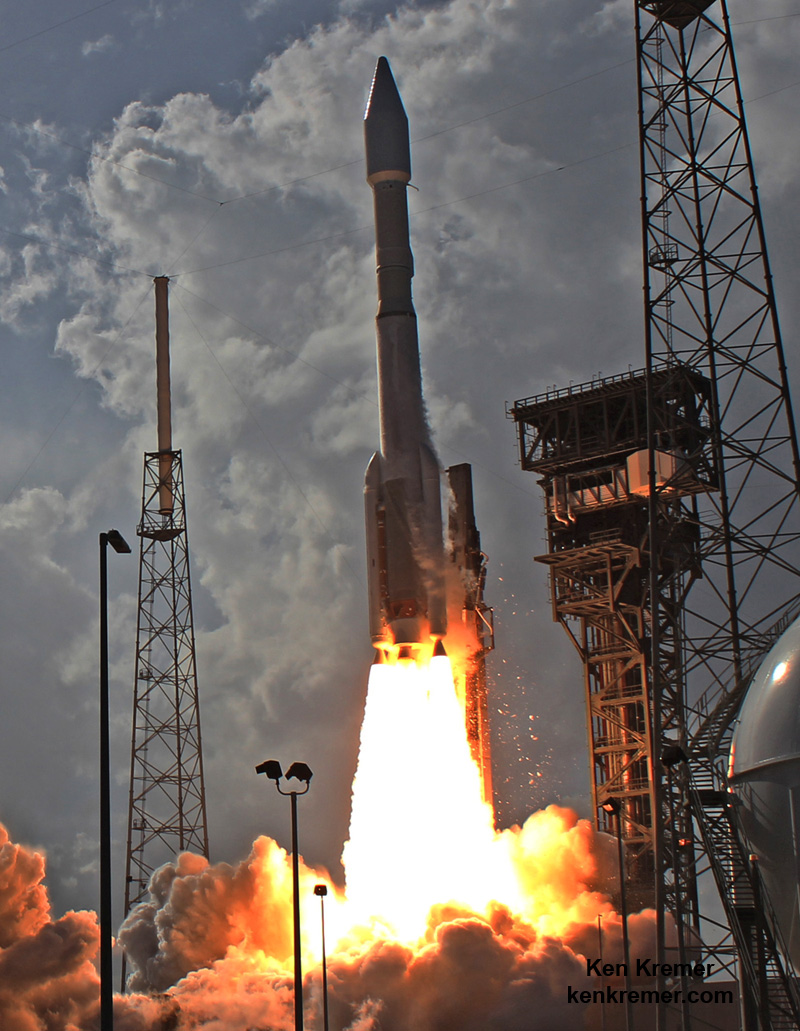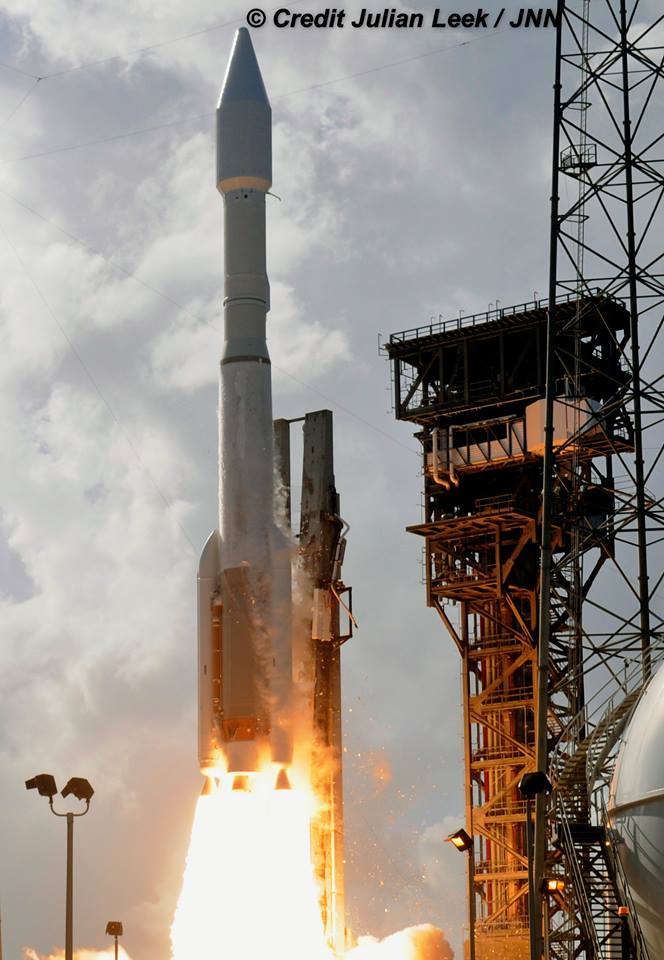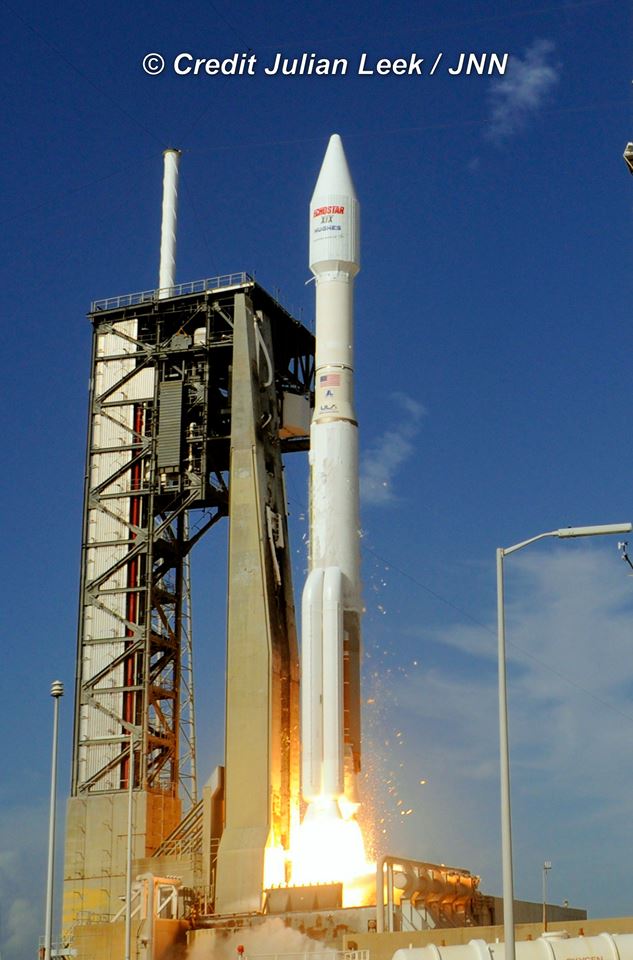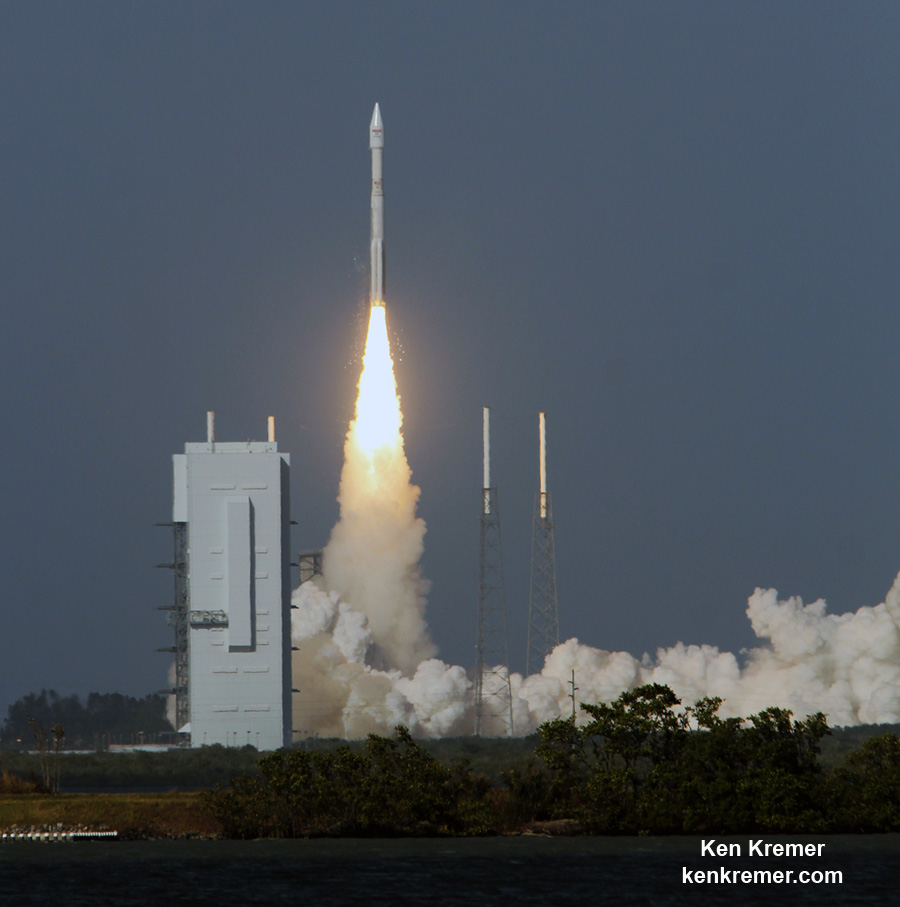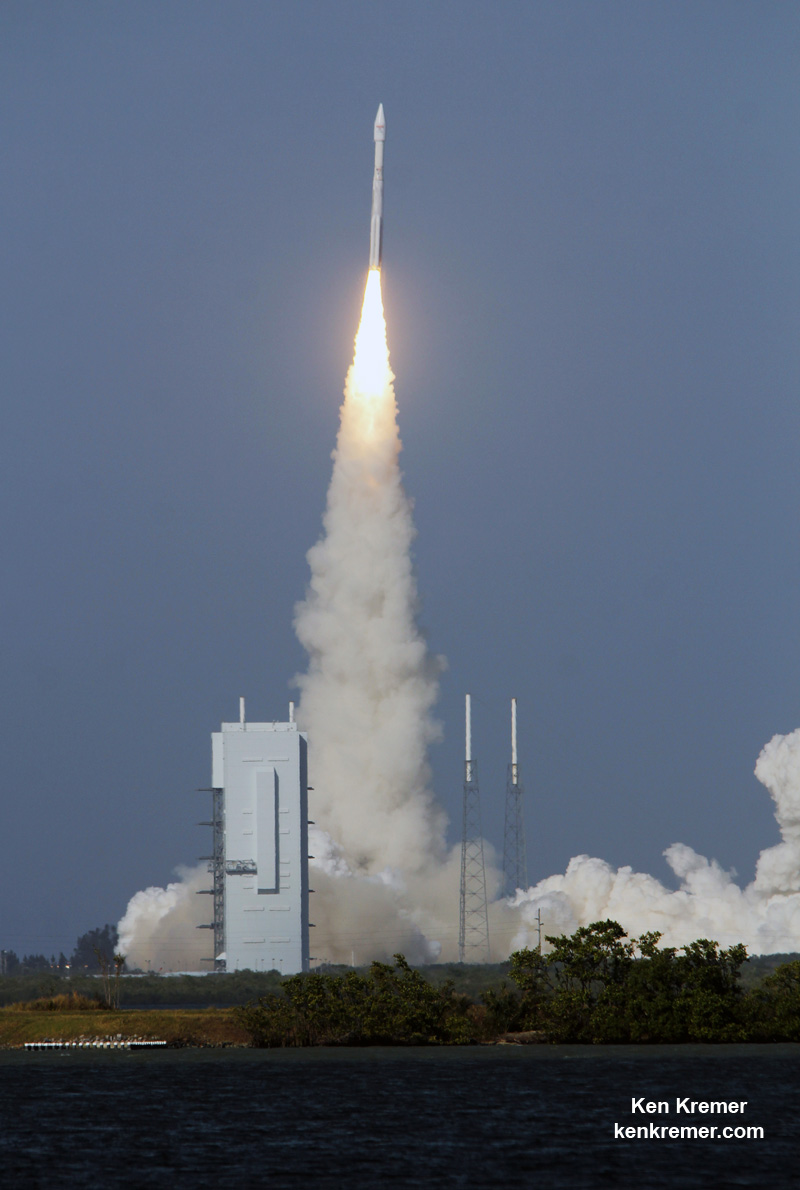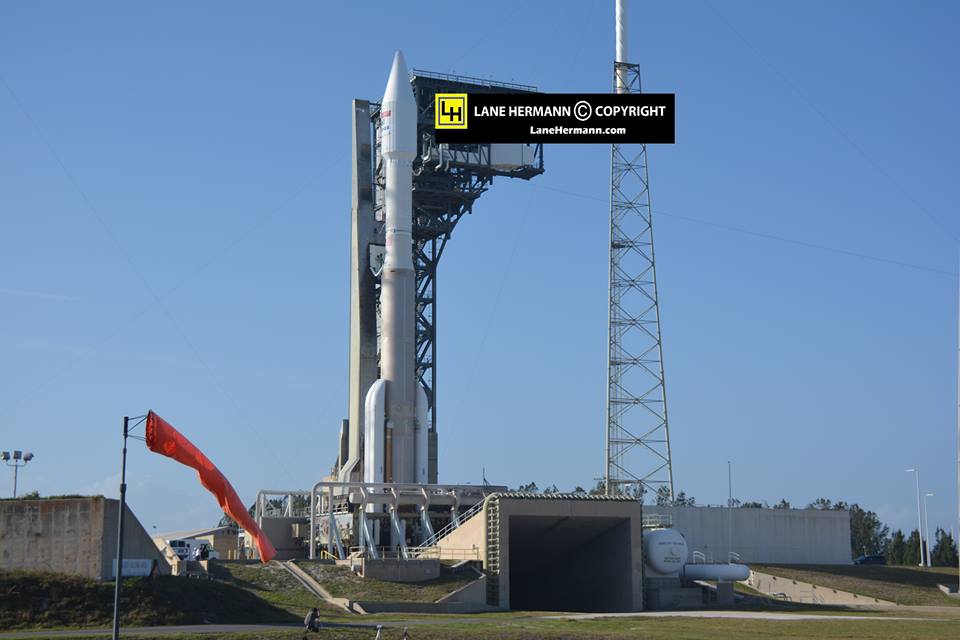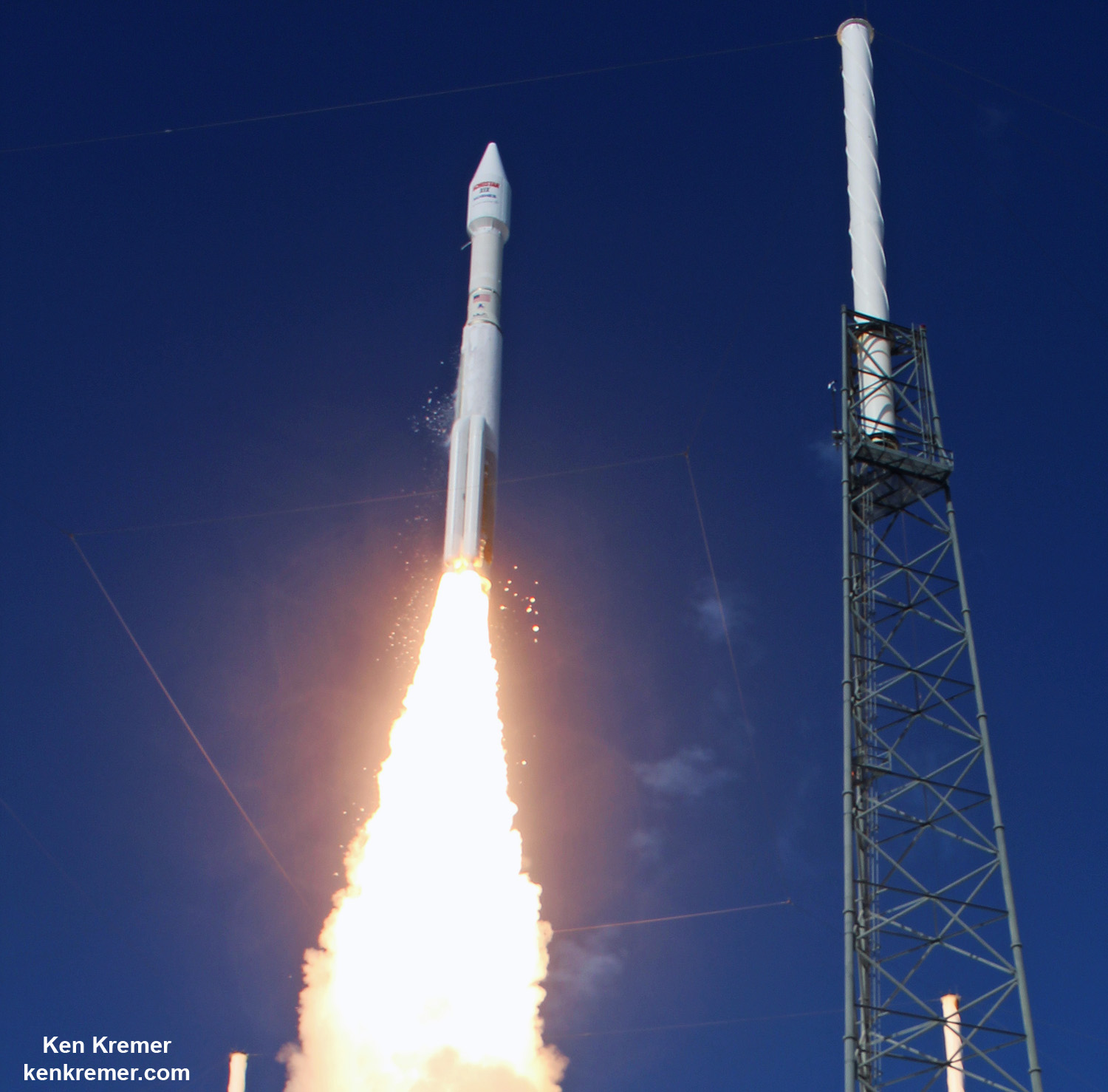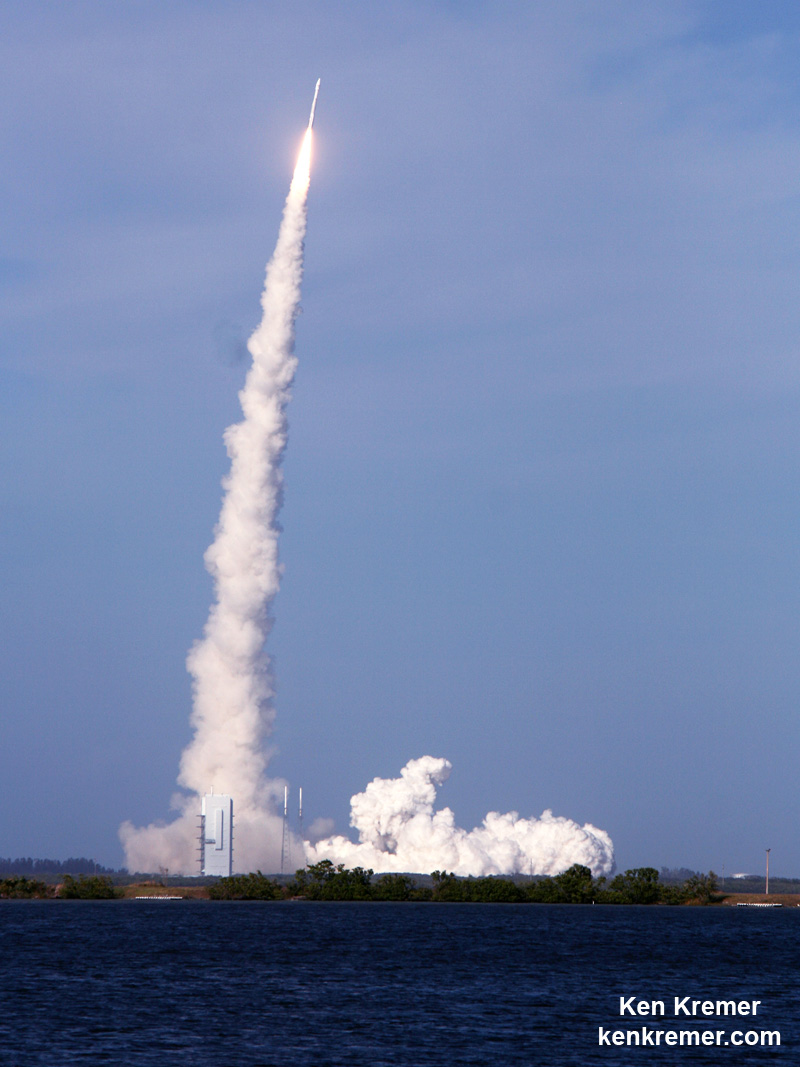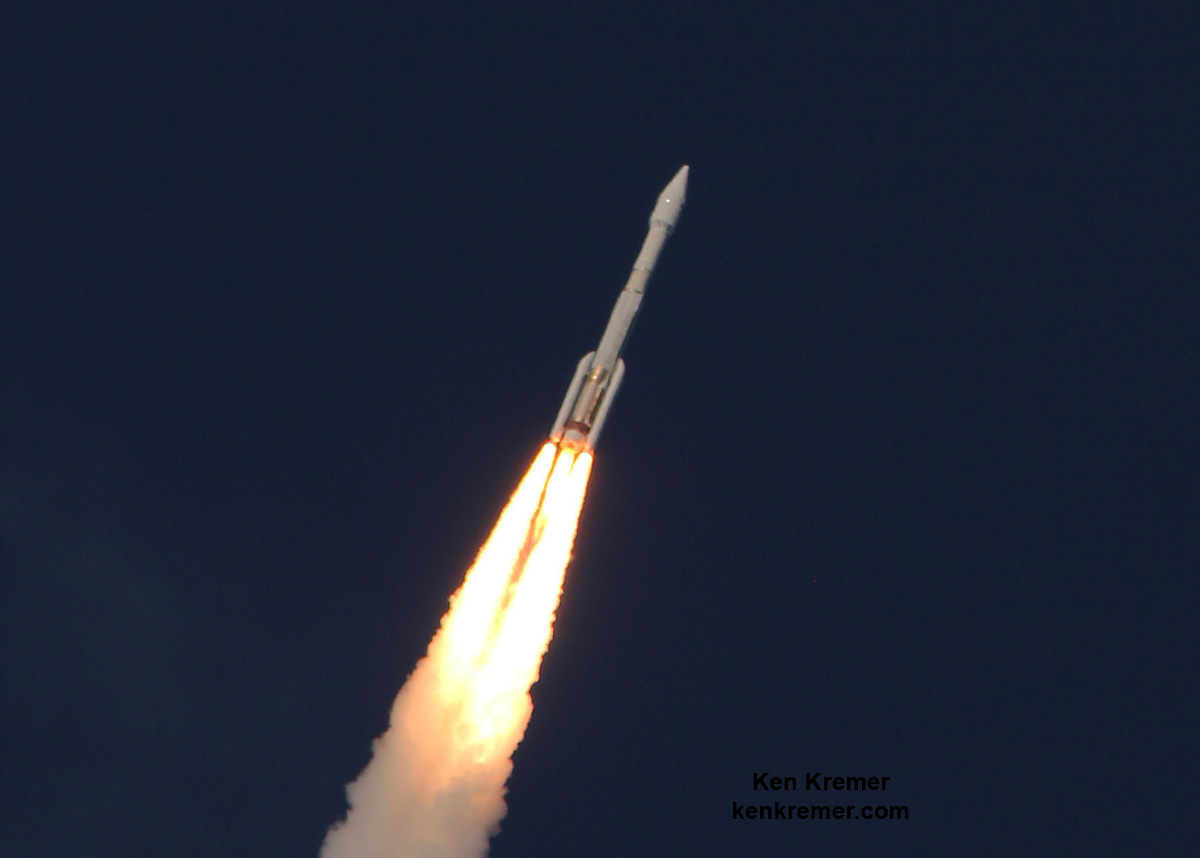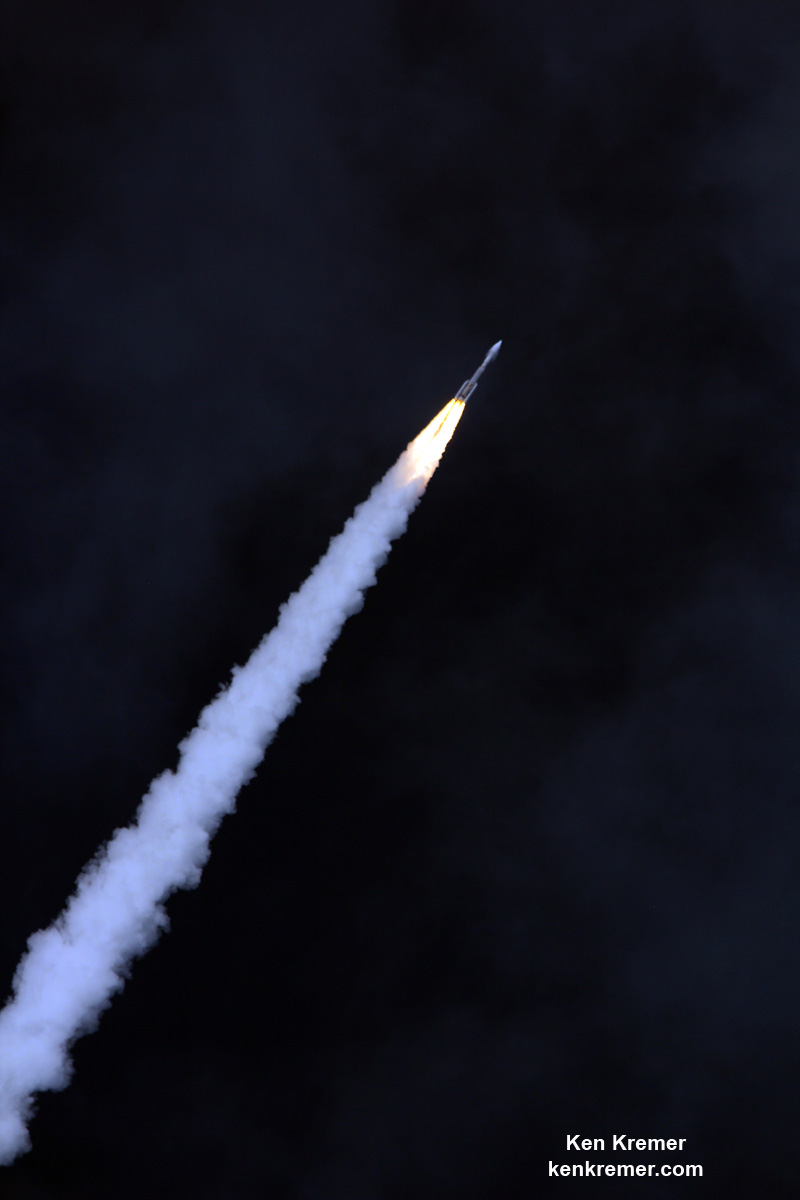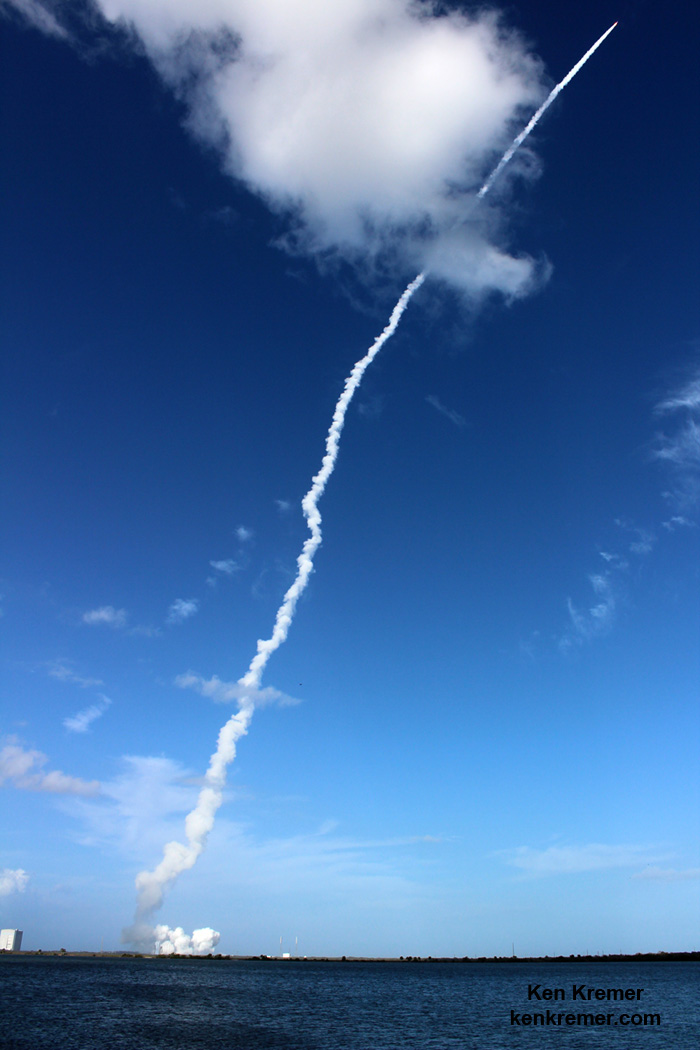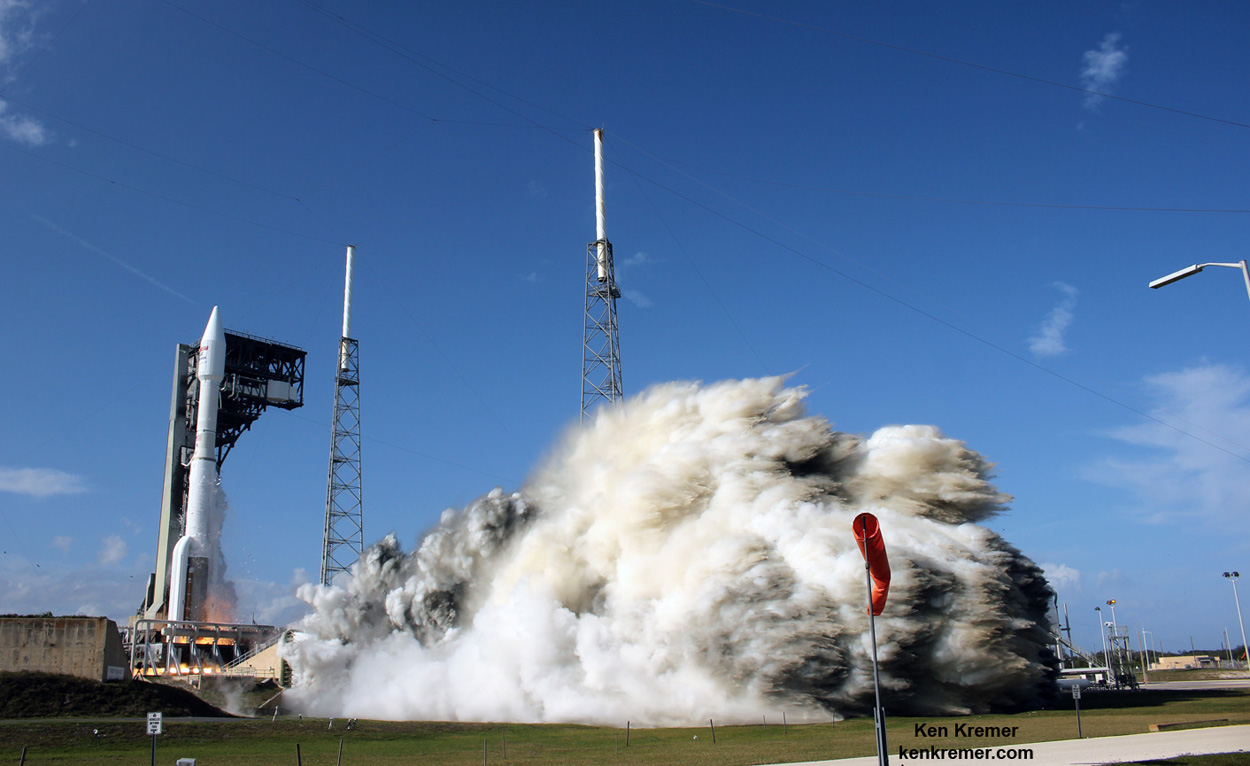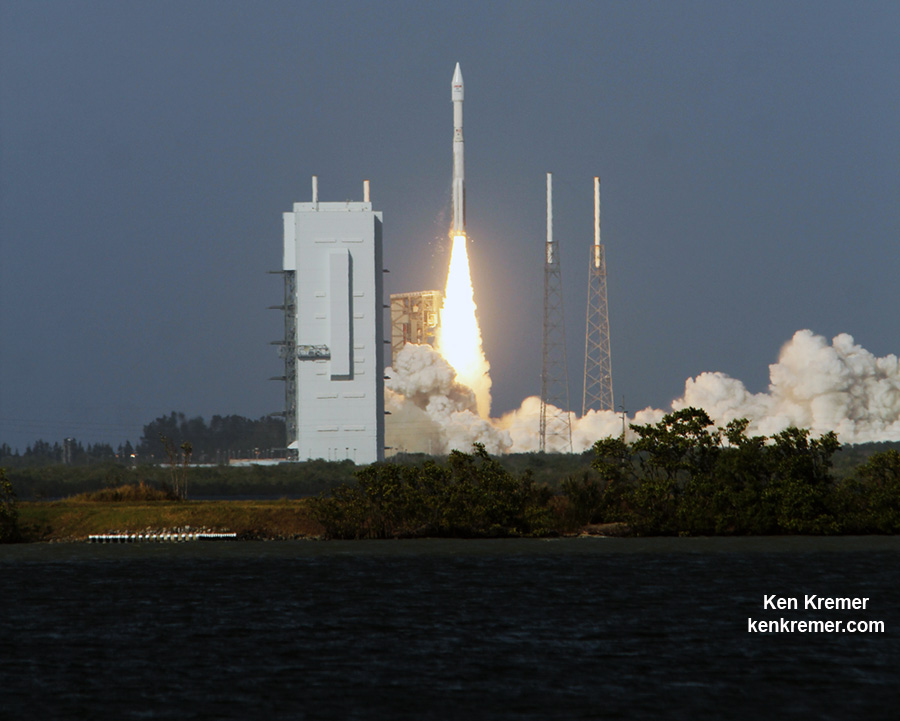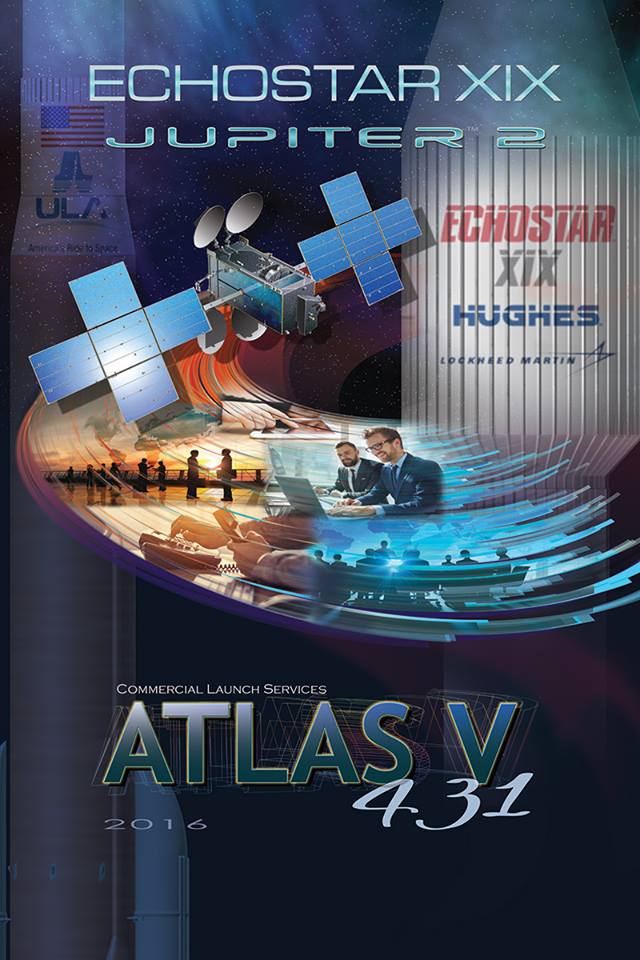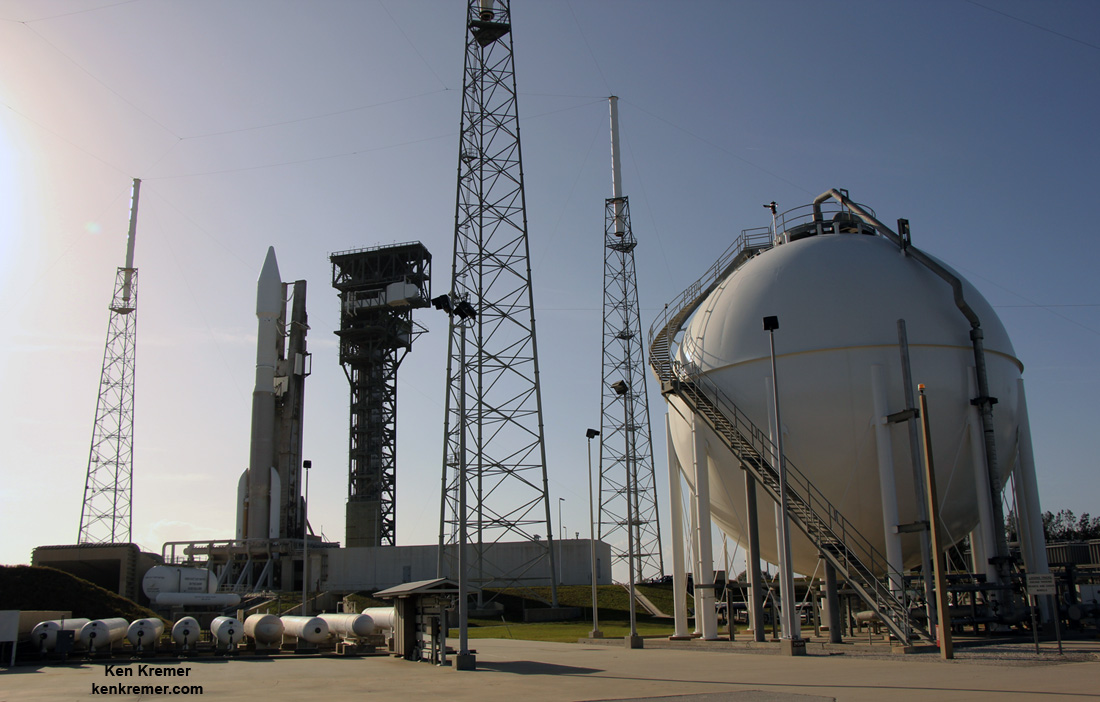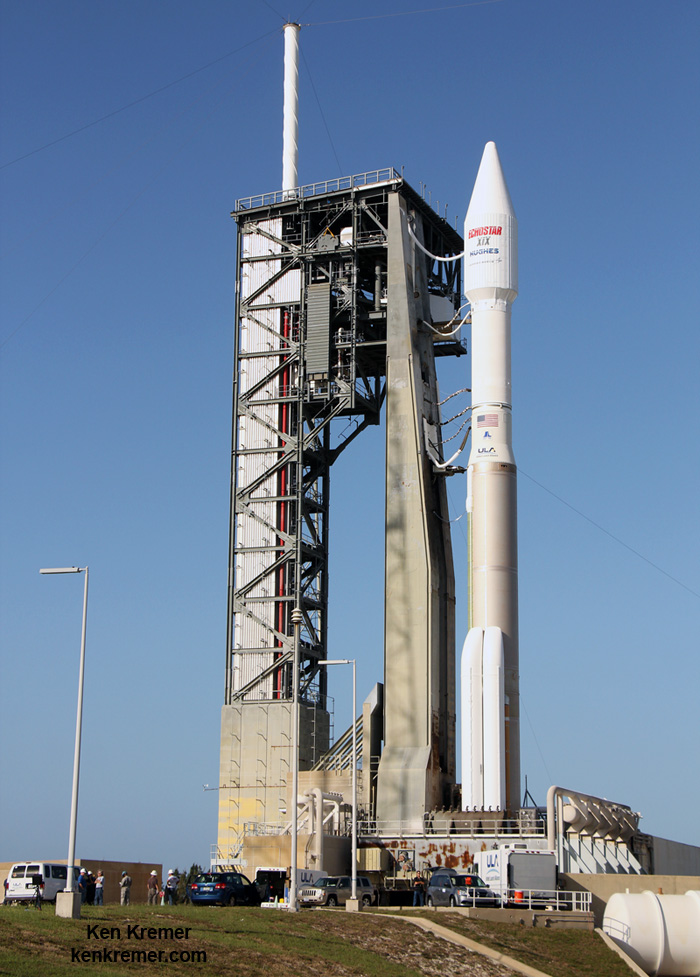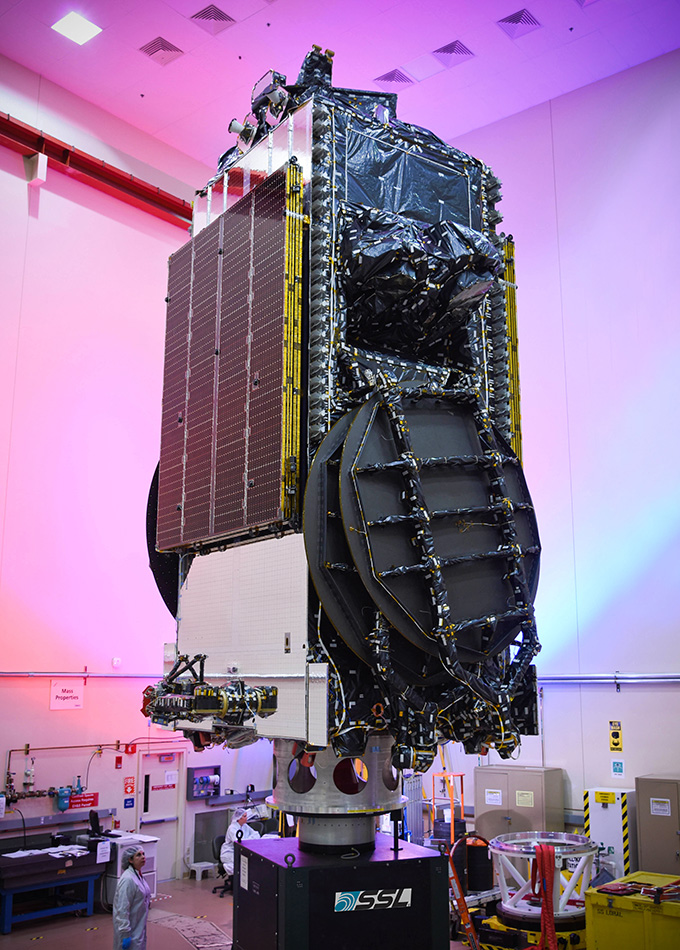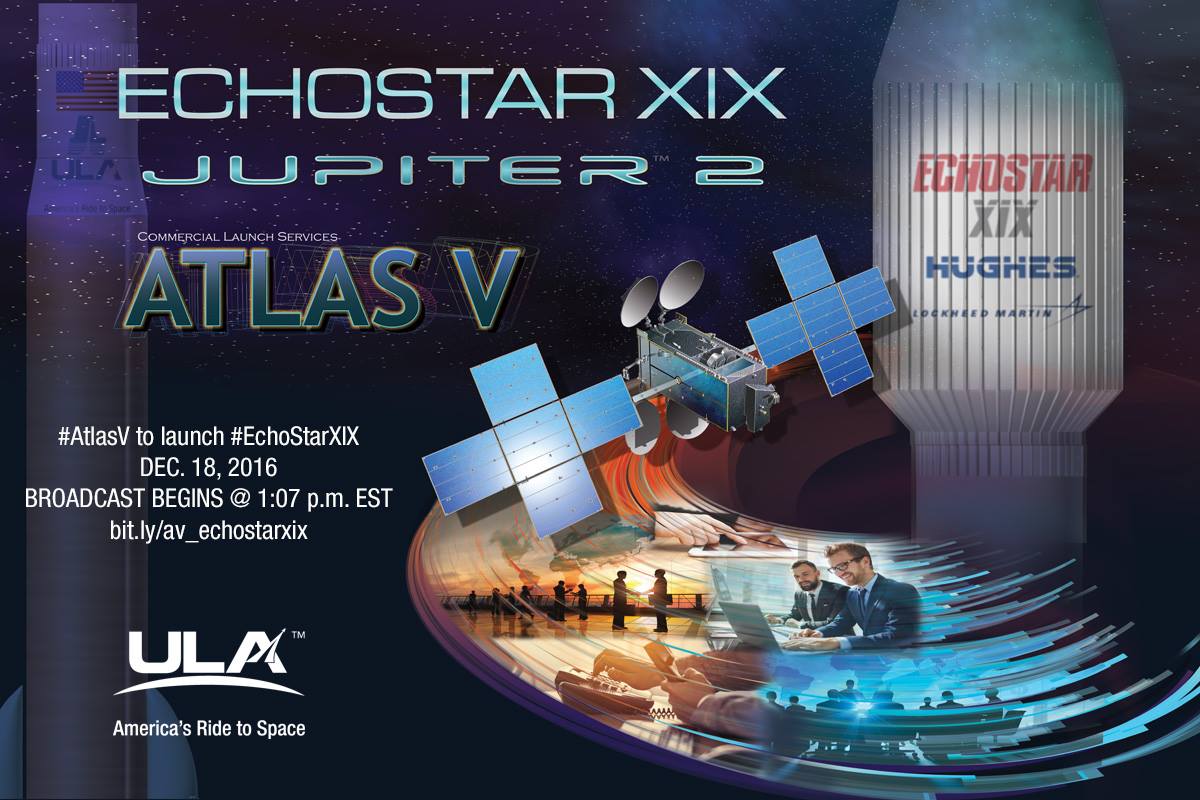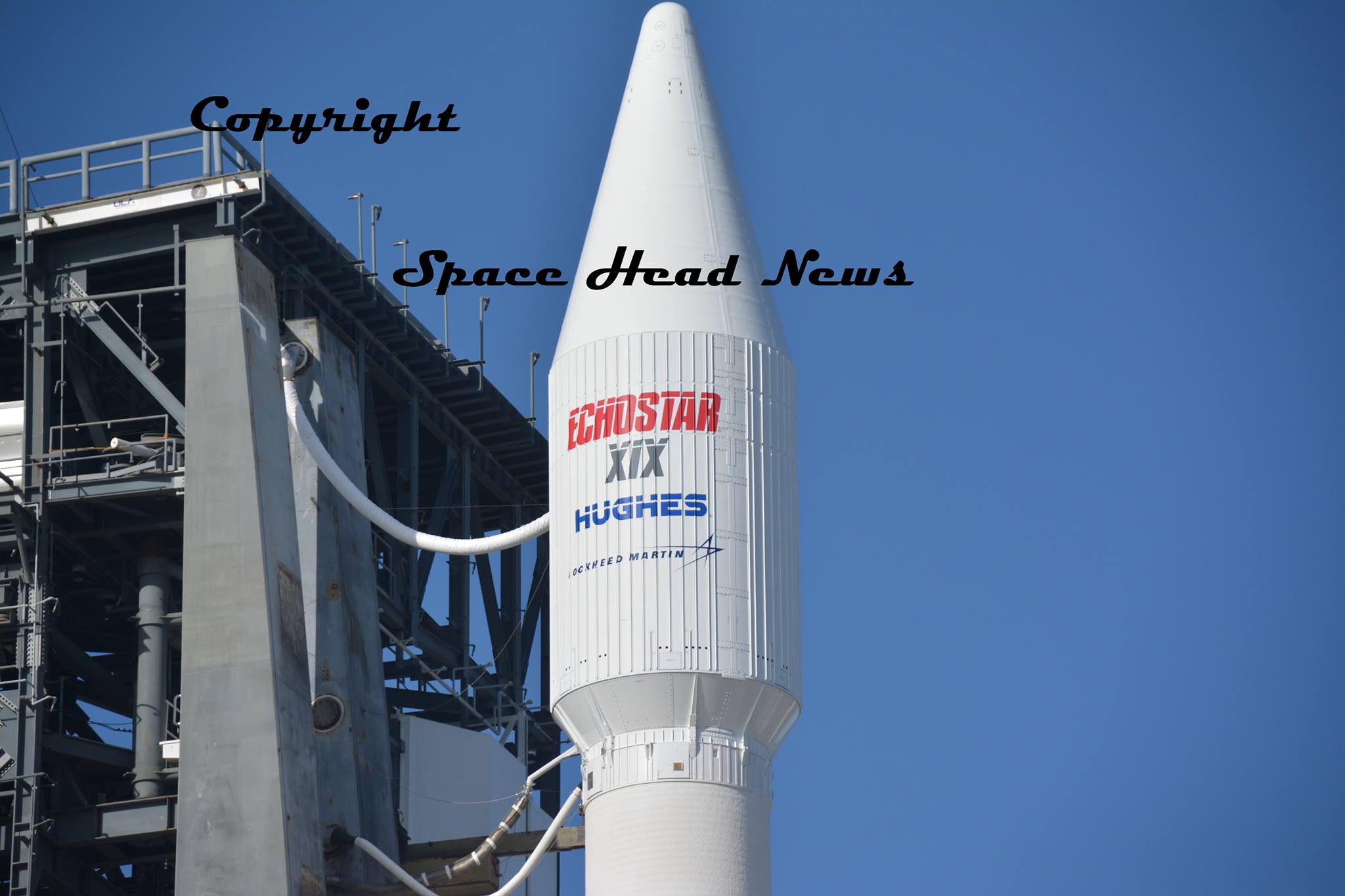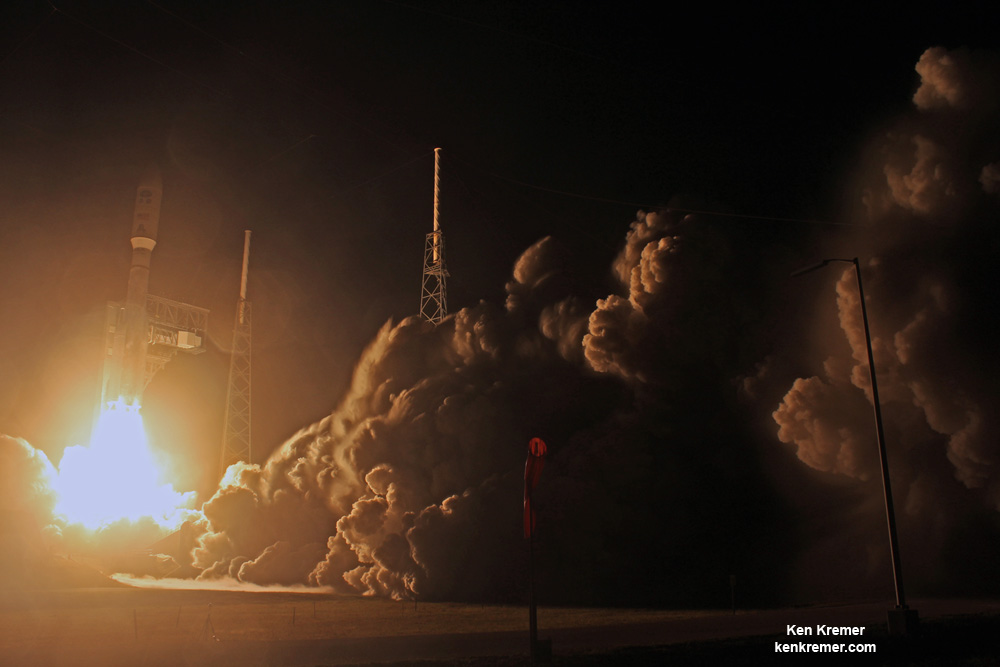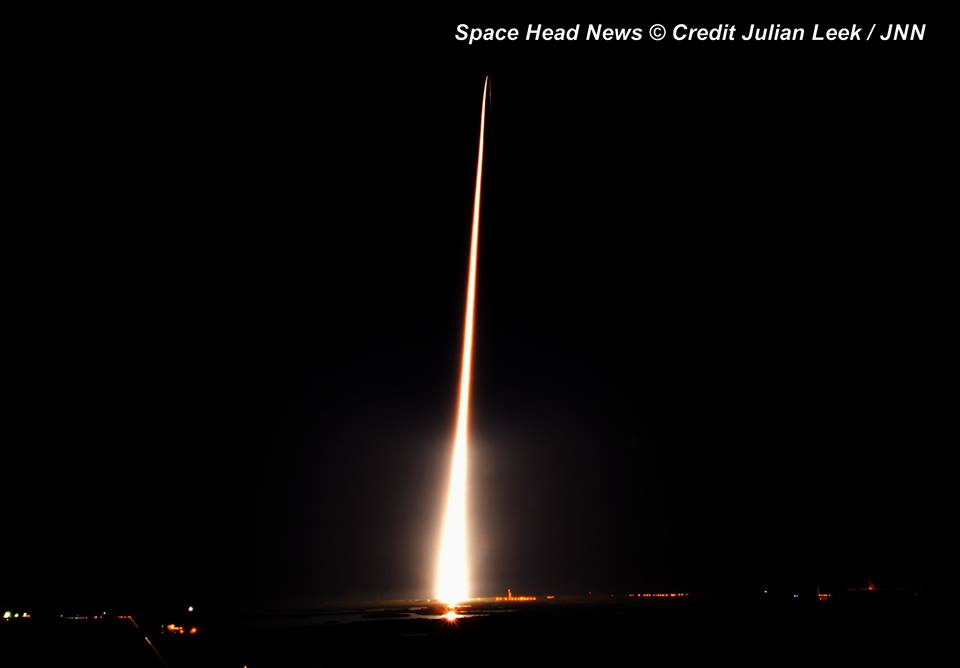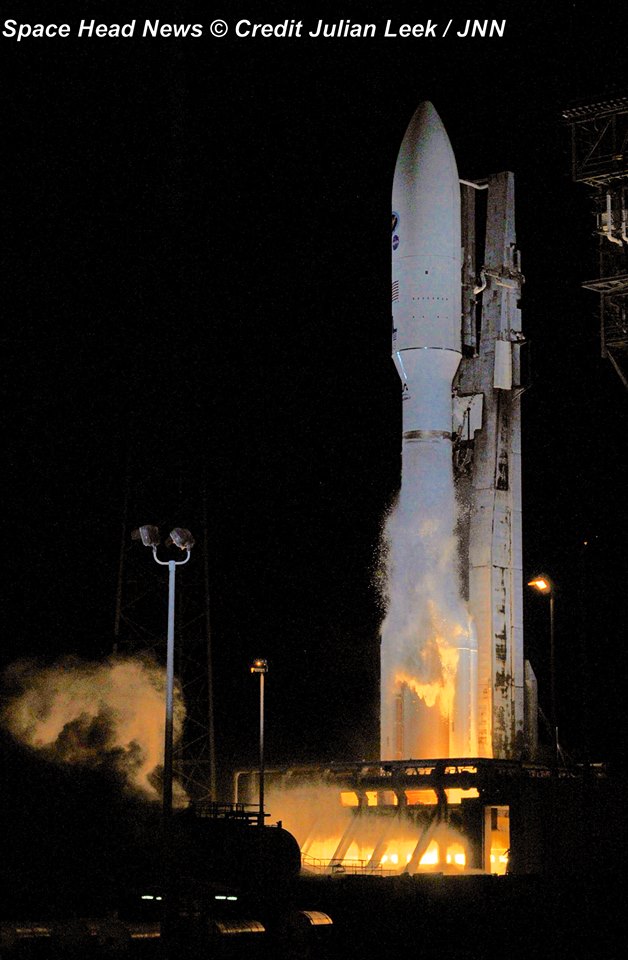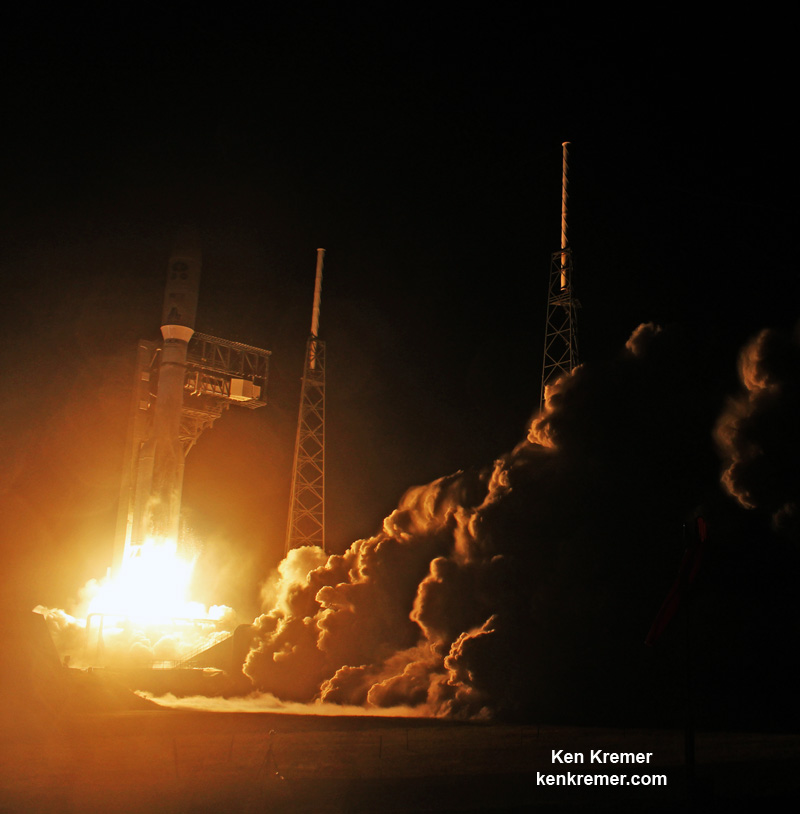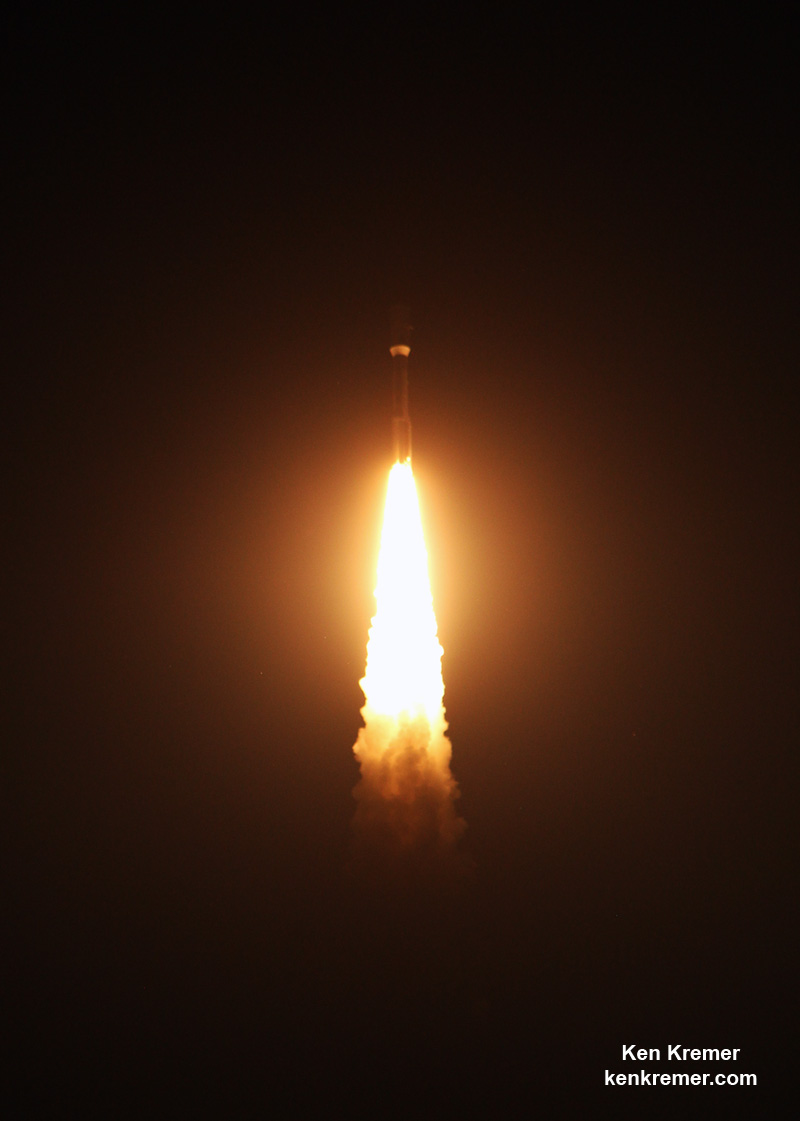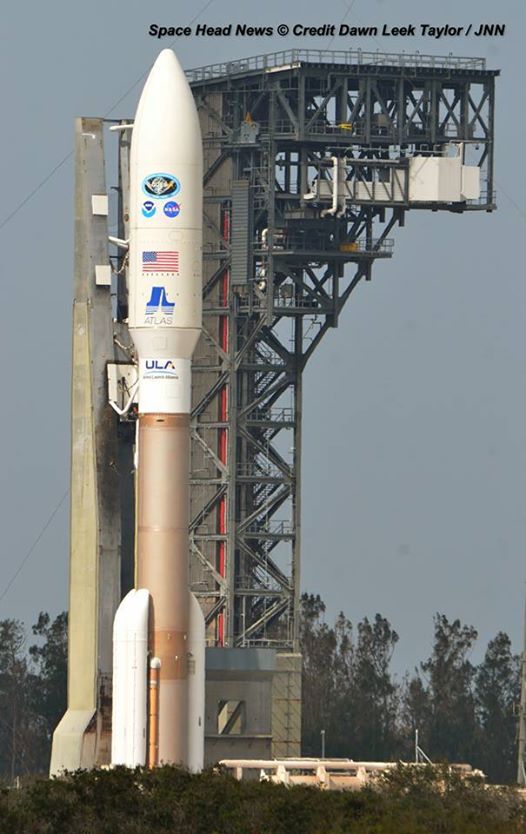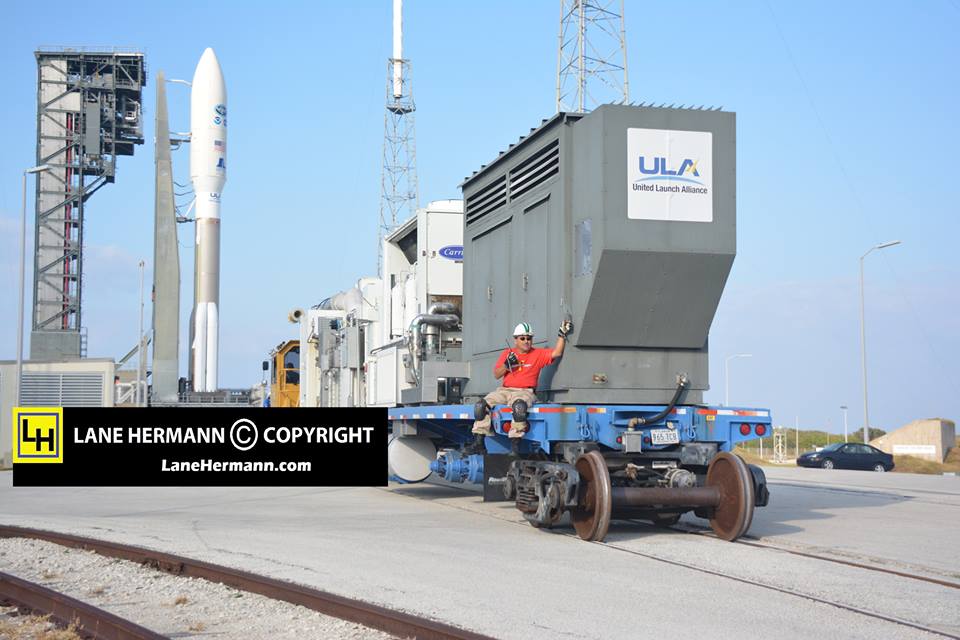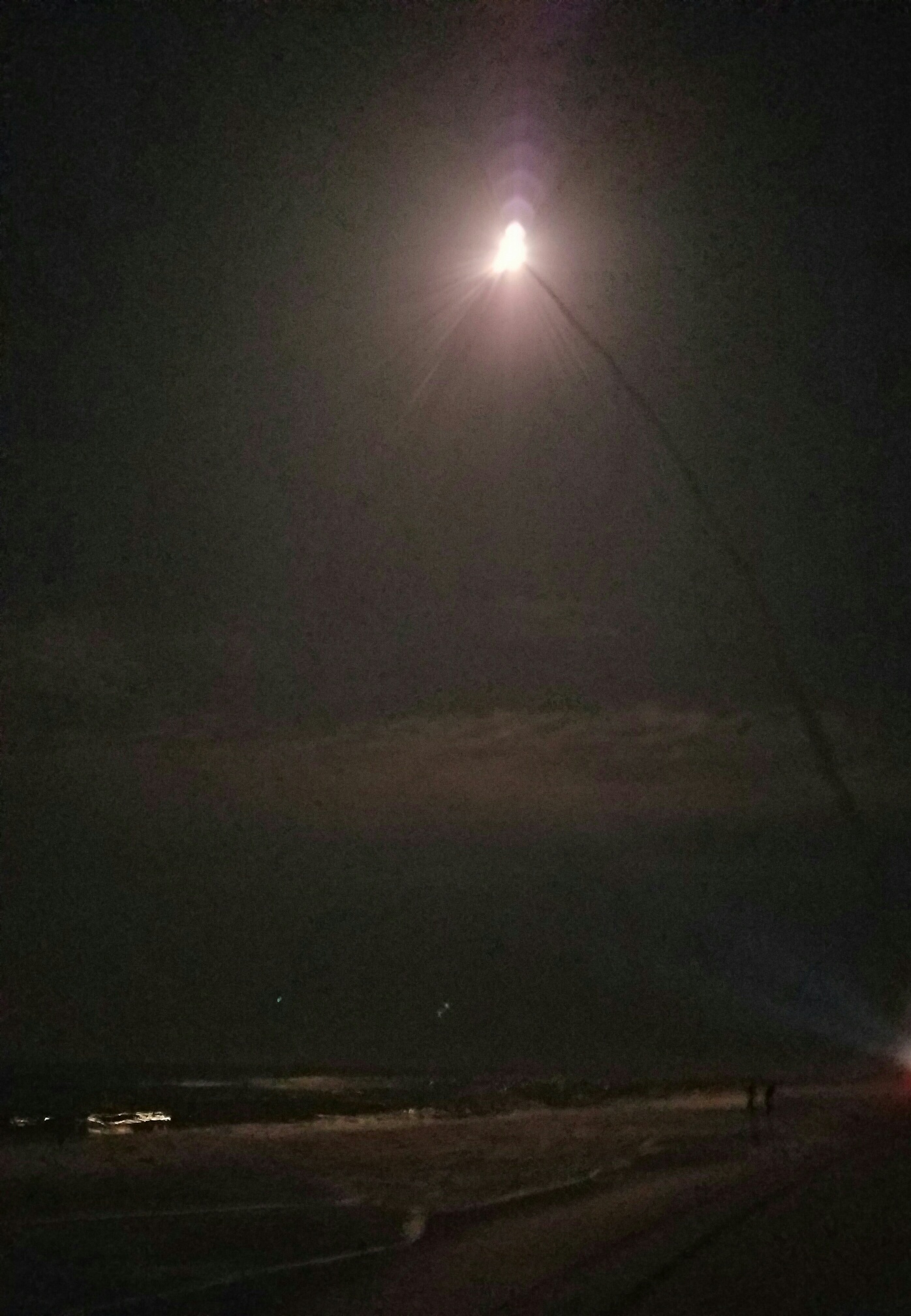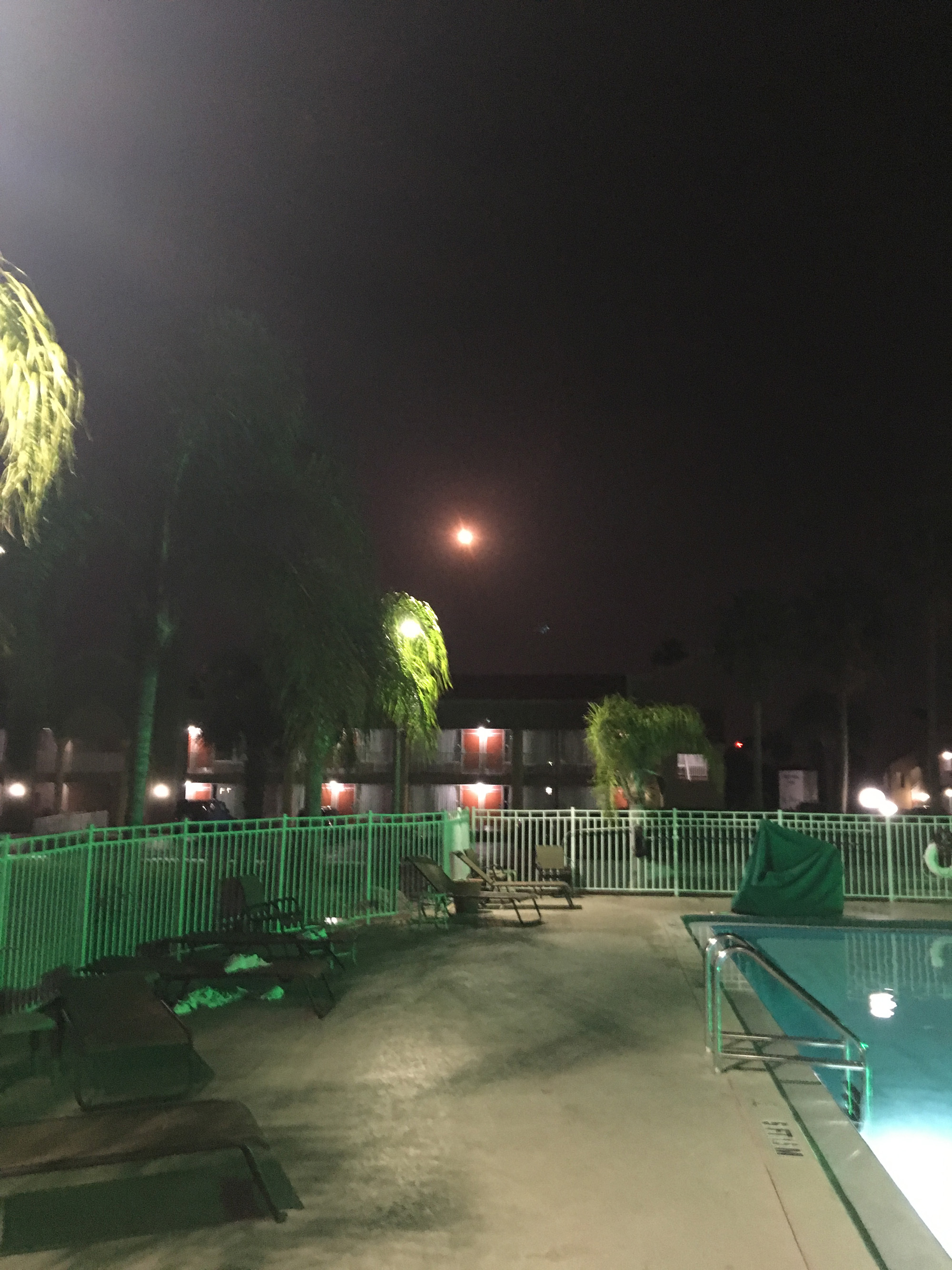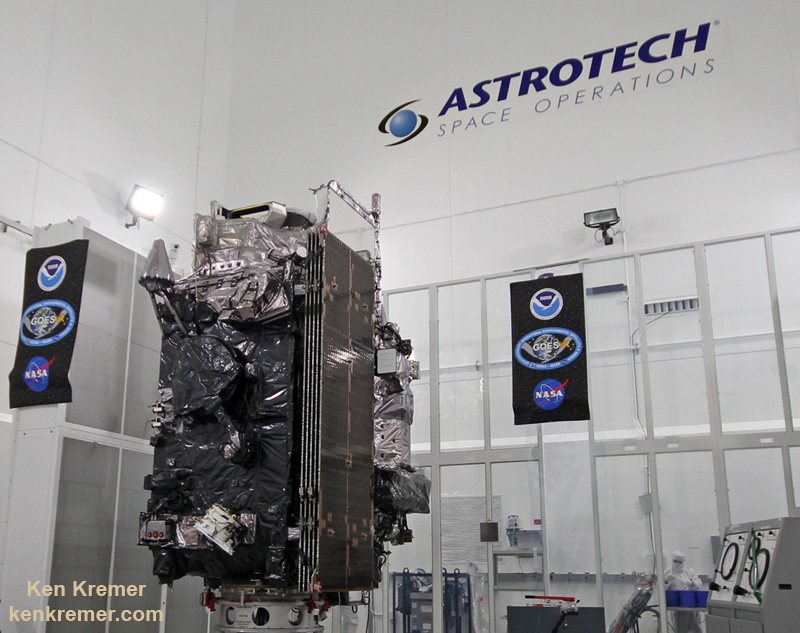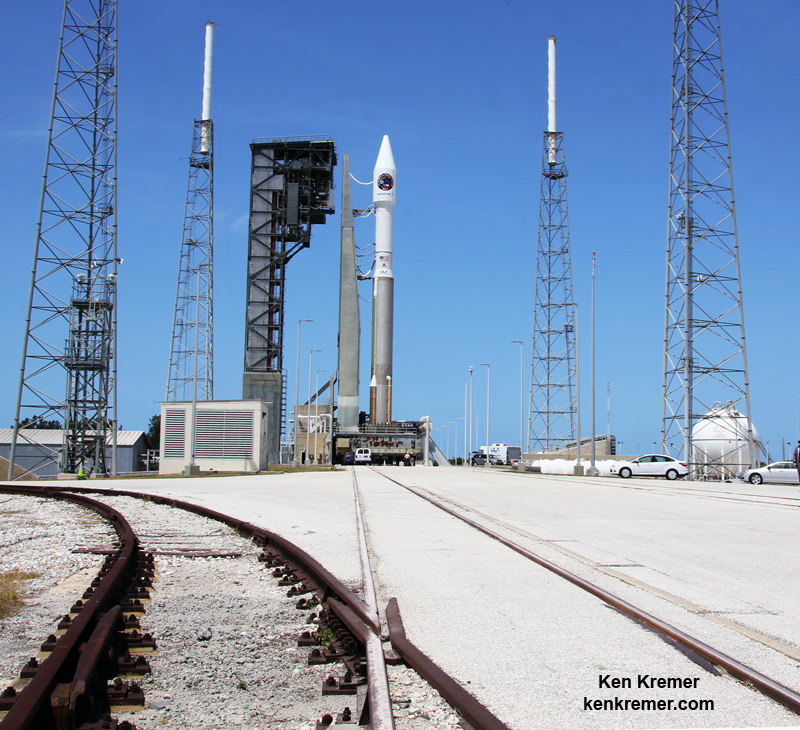
KENNEDY SPACE CENTER, FL – The ‘SS John Glenn’ cargo freighter stands proudly poised for launch at pad 41 from the Florida Space Coast on Tuesday April 18, loaded with a stash of nearly 4 tons of science investigations and essential supplies atop a United Launch Alliance Atlas V rocket destined for the multinational crew aboard the International Space Station (ISS).
The lunchtime liftoff of the ‘SS John Glenn’ Cygnus resupply spacecraft manufactured by NASA commercial cargo provider Orbital ATK is slated for 11:11 a.m. EDT Tuesday, April 18 from Space Launch Complex 41 on Cape Canaveral Air Force Station, FL.
The US cargo ships provided by NASA suppliers Orbital ATK and SpaceX every few months act as NASA’s essential railroad to space. And they are vital to operating the station with a steady stream of new research experiments as well as essential hardware, spare parts, crew supplies, computer, maintenance and spacewalking equipment as well food, water, clothing, provisions and much more.
The launch window lasts 30 minutes and runs from 11:11-11:41 a.m. EDT April 18.
Excited spectators are gathering from near and far and Tuesday’s weather outlook is spectacular so far.

Blastoff of the S.S. John Glenn on the OA-7 or CRS-7 flight counts as Orbital ATK’s seventh contracted commercial resupply services mission to the ISS for NASA.
The ‘S.S. John Glenn’ is named in honor of legendary NASA astronaut John Glenn – the first American to orbit Earth back in February 1962.
If you can’t attend in person, there are a few options to watch online.
NASA’s Atlas V/Cygnus CRS-7 launch coverage will be broadcast on NASA TV and the NASA launch blog beginning at 10 AM, Tuesday morning.
You can watch the launch live NASA TV at: http://www.nasa.gov/nasatv
A ULA webcast will be available starting at 10 a.m. at: www.ulalaunch.com
And for the first time ever you can also watch the launch live via a live 360 stream on the NASA Television YouTube channel. The 360 degree broadcast starts about 10 minutes prior to lift off at:
http://youtube.com/nasatelevision
The late morning daytime launch offers the perfect opportunity to debut this technology with the rocket magnificently visible atop a climbing plume of smoke and ash – and with a “pads-eye” view!
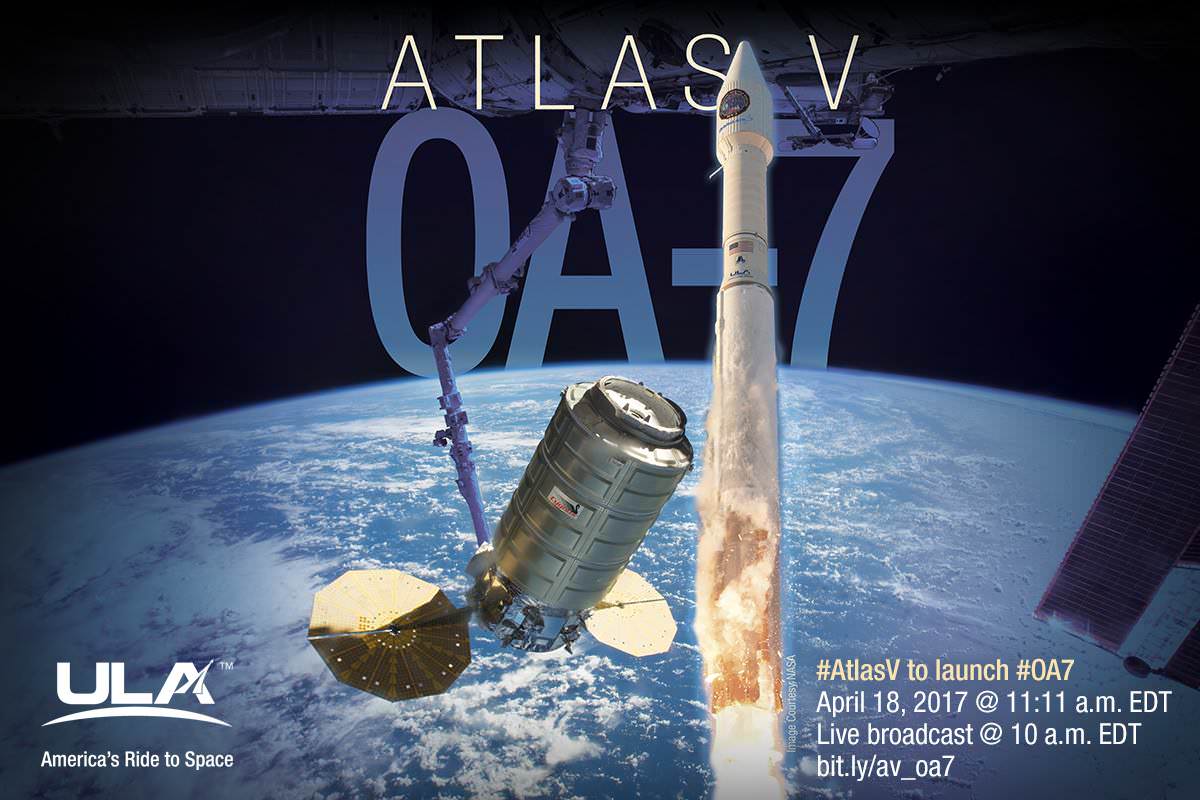
Science plays a big role in this mission in tribute named in tribute to John Glenn. Over one third of the payload loaded aboard Cygnus involves science.
“The new experiments will include an antibody investigation that could increase the effectiveness of chemotherapy drugs for cancer treatment and an advanced plant habitat for studying plant physiology and growth of fresh food in space,” according to NASA.
The astronauts will grow food in space, including Arabidopsis and dwarf wheat, in an experiment that could lead to providing nutrition to astronauts on a deep space journey to Mars.
“Another new investigation bound for the U.S. National Laboratory will look at using magnetized cells and tools to make it easier to handle cells and cultures, and improve the reproducibility of experiments. Cygnus also is carrying 38 CubeSats, including many built by university students from around the world as part of the QB50 program. The CubeSats are scheduled to deploy from either the spacecraft or space station in the coming months.”
Also aboard is the ‘Genes in Space-2’ experiment. A high school student experiment from Julian Rubinfien of Stuyvescent High School, New York City, to examine accelerated aging during space travel. This first experiment will test if telomere-like DNA can be amplified in space with a small box sized experiment that will be activated by station astronauts.
The Saffire III payload experiment will follow up on earlier missions to study the development and spread of fire and flames in the microgravity environment of space. The yard long experiment is located in the back of the Cygnus vehicle. It will be activated after Cygnus departs the station roughly 80 days after berthing. It will take a few hours to collect the data for transmission to Earth.
Furthermore you can learn more about the Orbital ATK CRS-7 mission by going to the mission home page at: http://www.nasa.gov/orbitalatk
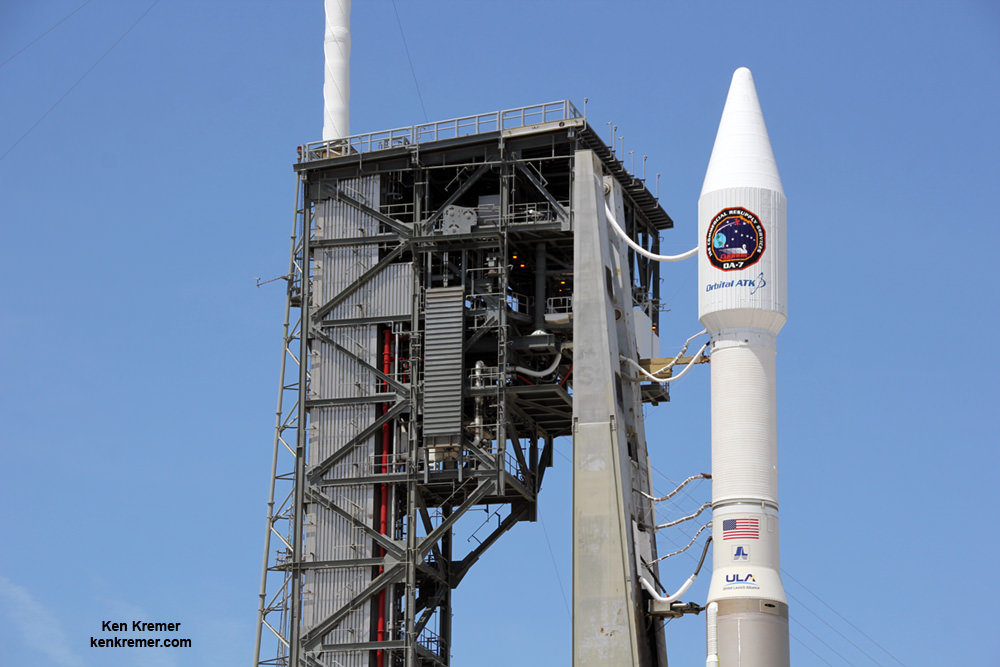
From a weather standpoint, Tuesday’s launch outlook is outstanding at this time.
According to meteorologists with the U.S. Air Force 45th Weather Squadron we are forecasting a 90 percent chance of “go” conditions at the 11:11 a.m. EDT launch time. The primary concern is for the possibility of cumulus clouds.
The forecast calls for temperatures of 75-76° F with on-shore winds peaking below 10 knots during the countdown.
In the event of a delay for any reason related to weather or technical issues a backup launch opportunity exists for Wednesday, April 19, and also looks promising.
The AF is also predicting the same 90 percent chance of “go” conditions at launch time. With the primary concern again being for the possibility of cumulus clouds.
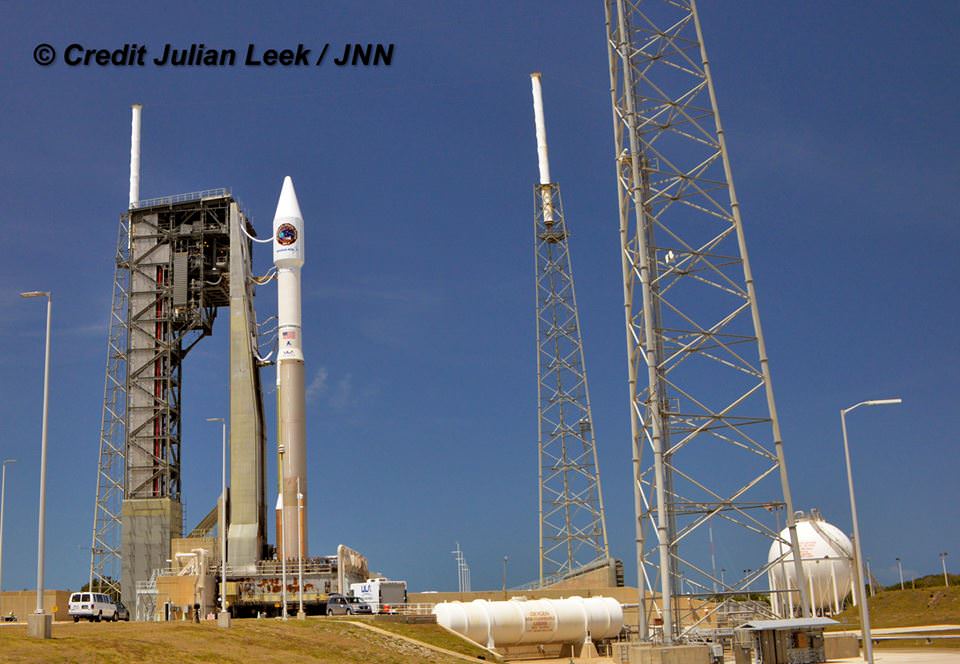
The rocket was rolled out to pad 41 at about 9 a.m. EDT this morning Monday April 17, in a process that takes about 25 minutes
The rocket and spacecraft passed the Launch Readiness Review held by United Launch Alliance and Orbital ATK on April 15. Launch managers from ULA, Orbital ATK and NASA determined all is ready for Tuesday’s targeted launch to the ISS.
OA-7 is loaded with 3500 kg (7700 pounds) of science experiments and hardware, crew supplies, spare parts, gear and station hardware to the orbital laboratory in support over 250 research experiments being conducted on board by the Expedition 51 and 52 crews. The total volumetric capacity of Cygnus exceeds 27 cubic meters.
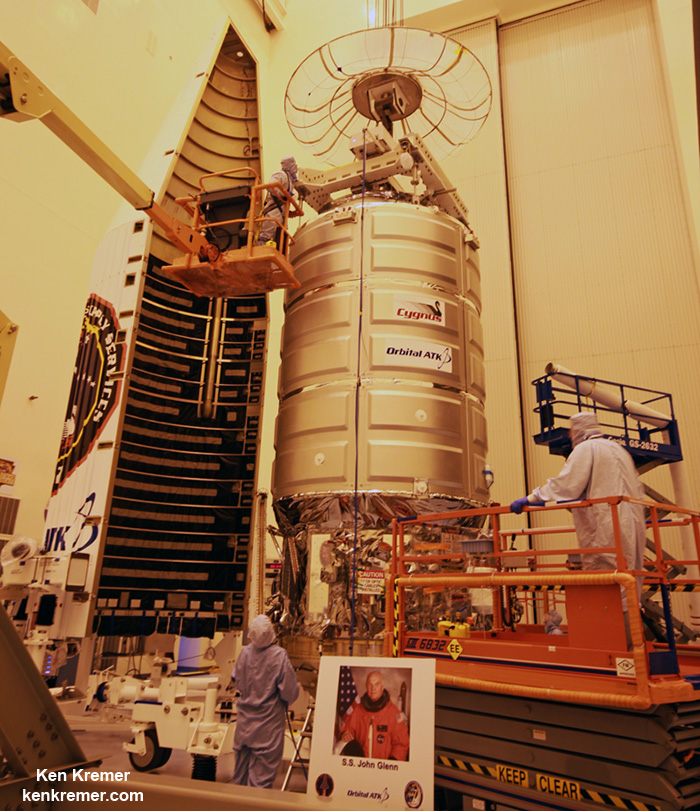
The Orbital ATK Cygnus CRS-7 (OA-7) mission will launch aboard an Atlas V Evolved Expendable Launch Vehicle (EELV) in the 401 configuration vehicle. This includes a 4-meter-diameter payload fairing in its longest, extra extended configuration (XEPF) to accommodate the enhanced, longer Cygnus variant being used.

The first stage of the Atlas V booster is powered by the RD AMROSS RD-180 engine. There are no side mounted solids on the first stage. The Centaur upper stage is powered by the Aerojet Rocketdyne RL10C-1 engine.
Overall this is the 71st launch of an Atlas V and the 36th utilizing the 401 configuration.
The 401 is thus the workhorse version of the Atlas V and accounts for half of all launches.

Watch for Ken’s onsite launch reports direct from the Kennedy Space Center in Florida.
Stay tuned here for Ken’s continuing Earth and Planetary science and human spaceflight news.
………….
Learn more about the SS John Glenn/ULA Atlas V launch to ISS, NASA missions and more at Ken’s upcoming outreach events at Kennedy Space Center Quality Inn, Titusville, FL:
Apr 18-19: “SS John Glenn/ULA Atlas V launch to ISS, SpaceX SES-10, EchoStar 23, CRS-10 launch to ISS, ULA Atlas SBIRS GEO 3 launch, GOES-R weather satellite launch, OSIRIS-Rex, SpaceX and Orbital ATK missions to the ISS, Juno at Jupiter, ULA Delta 4 Heavy spy satellite, SLS, Orion, Commercial crew, Curiosity explores Mars, Pluto and more,” Kennedy Space Center Quality Inn, Titusville, FL, evenings
